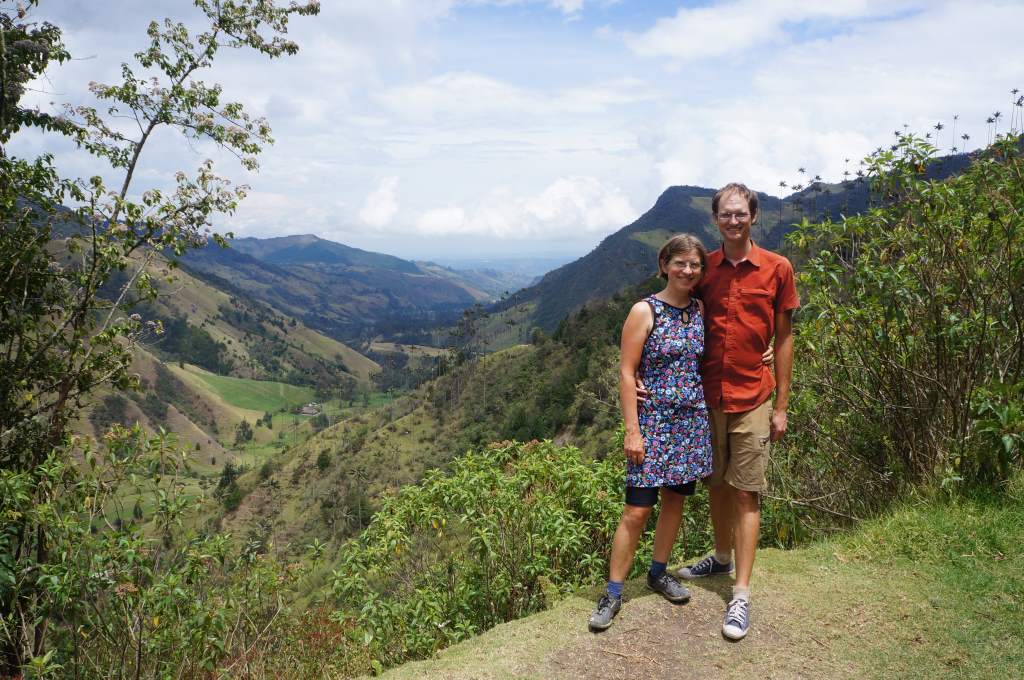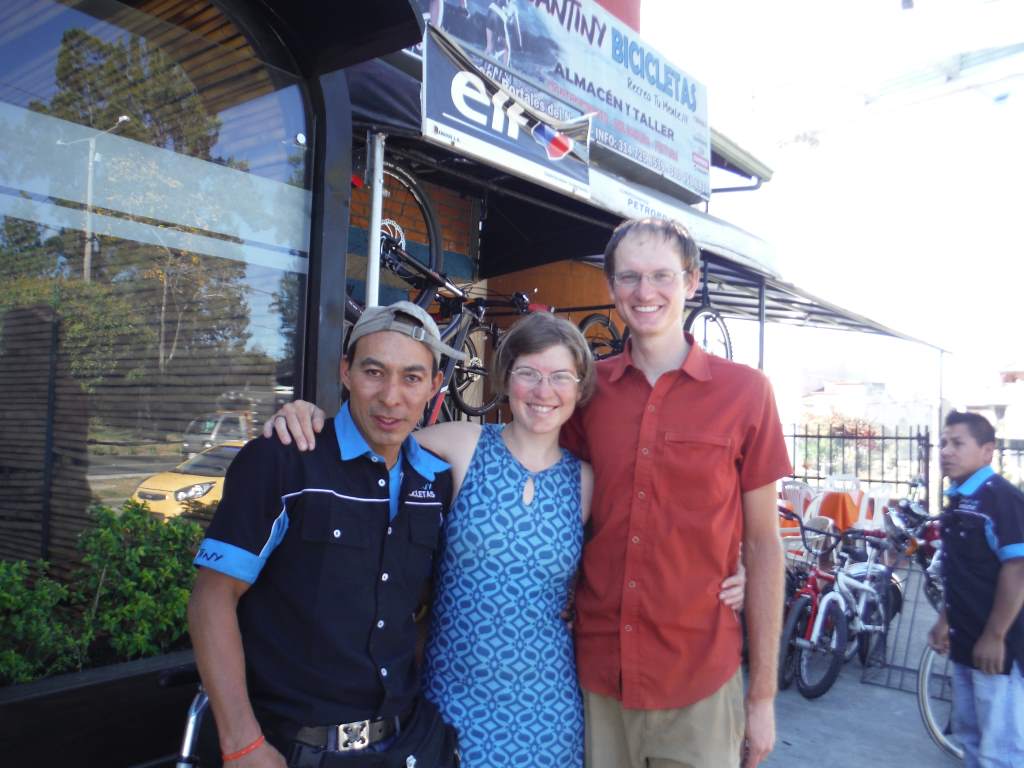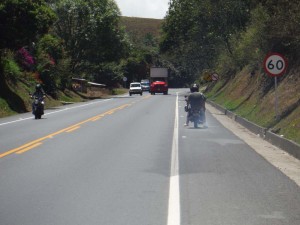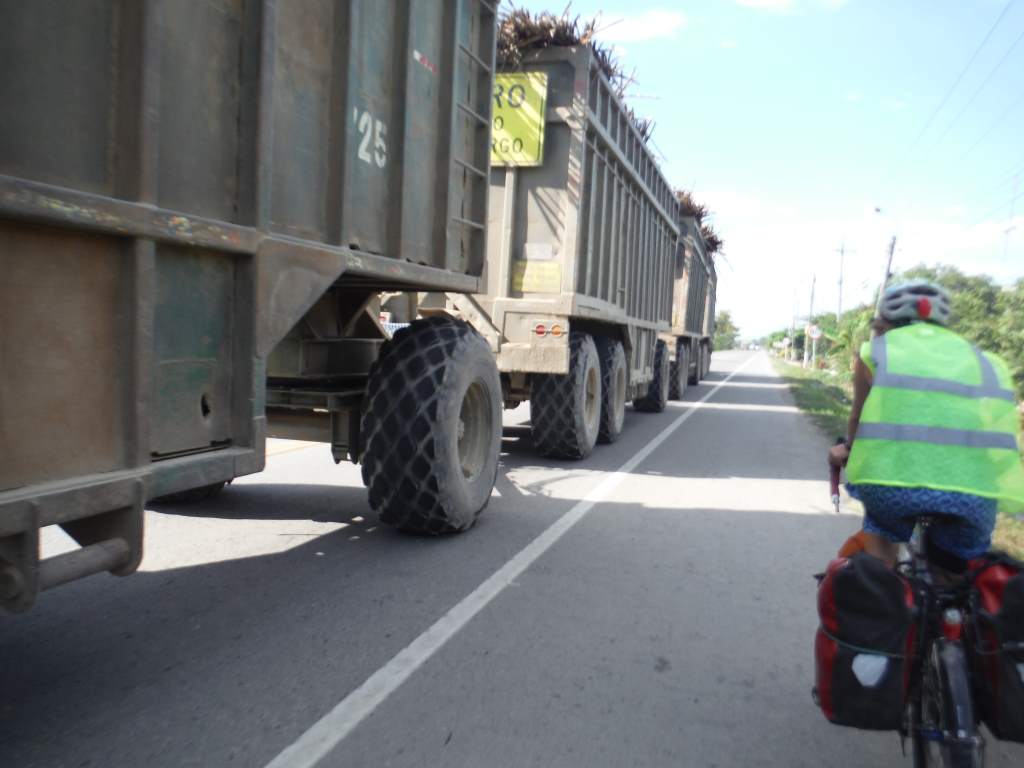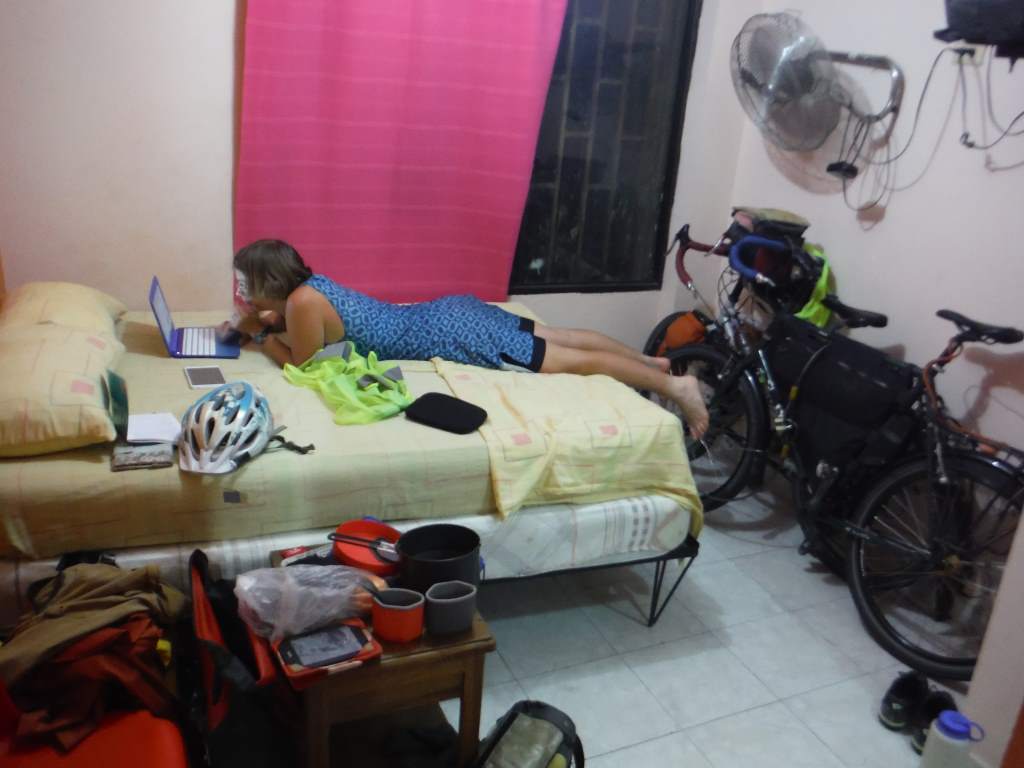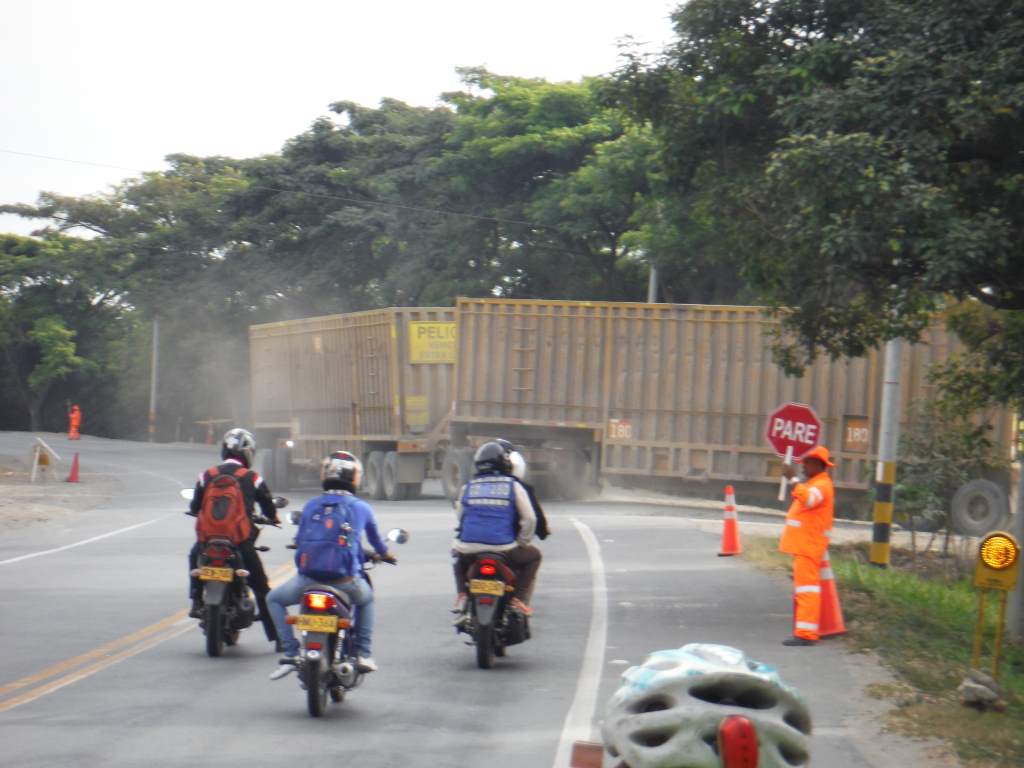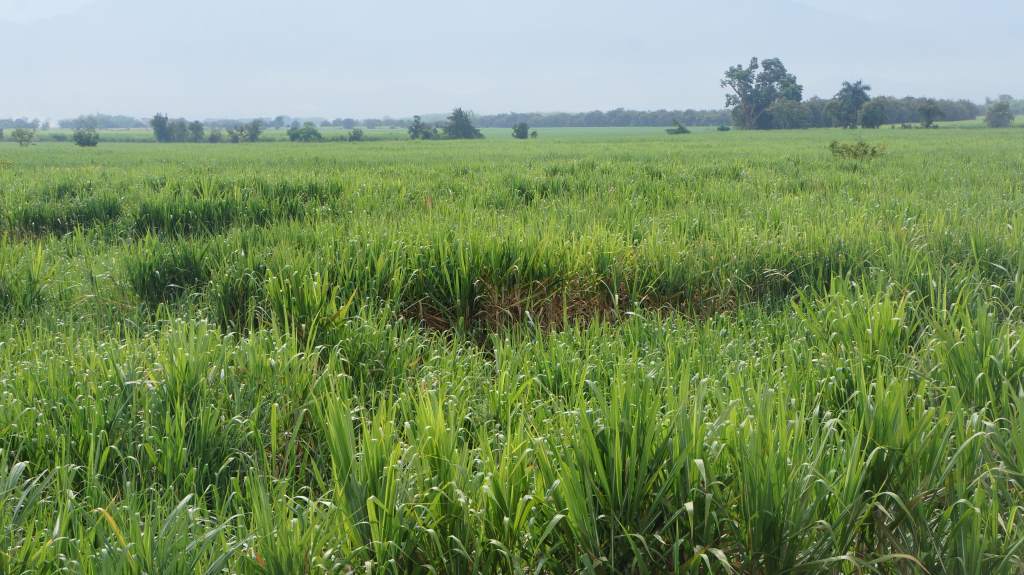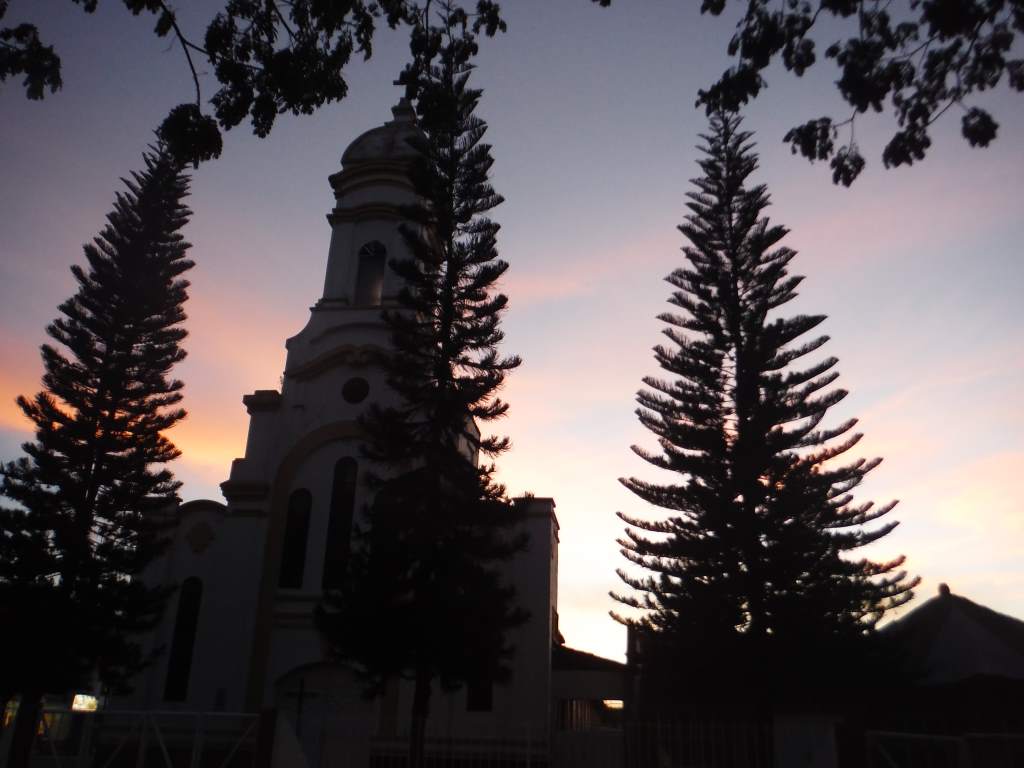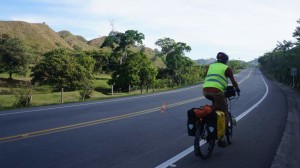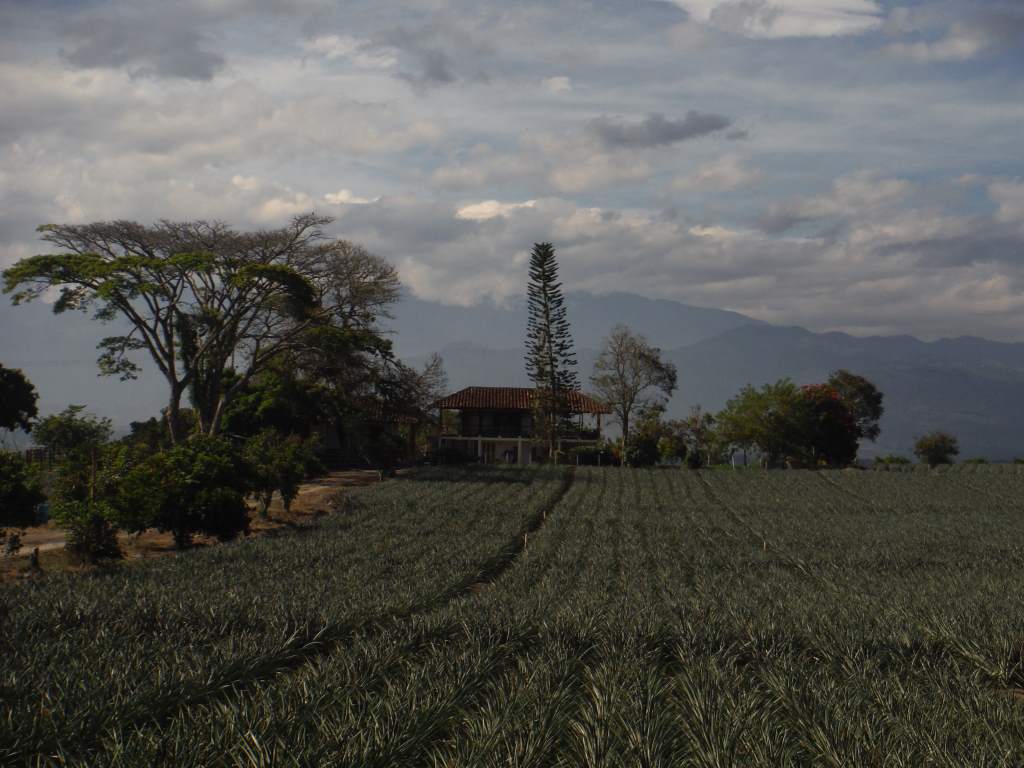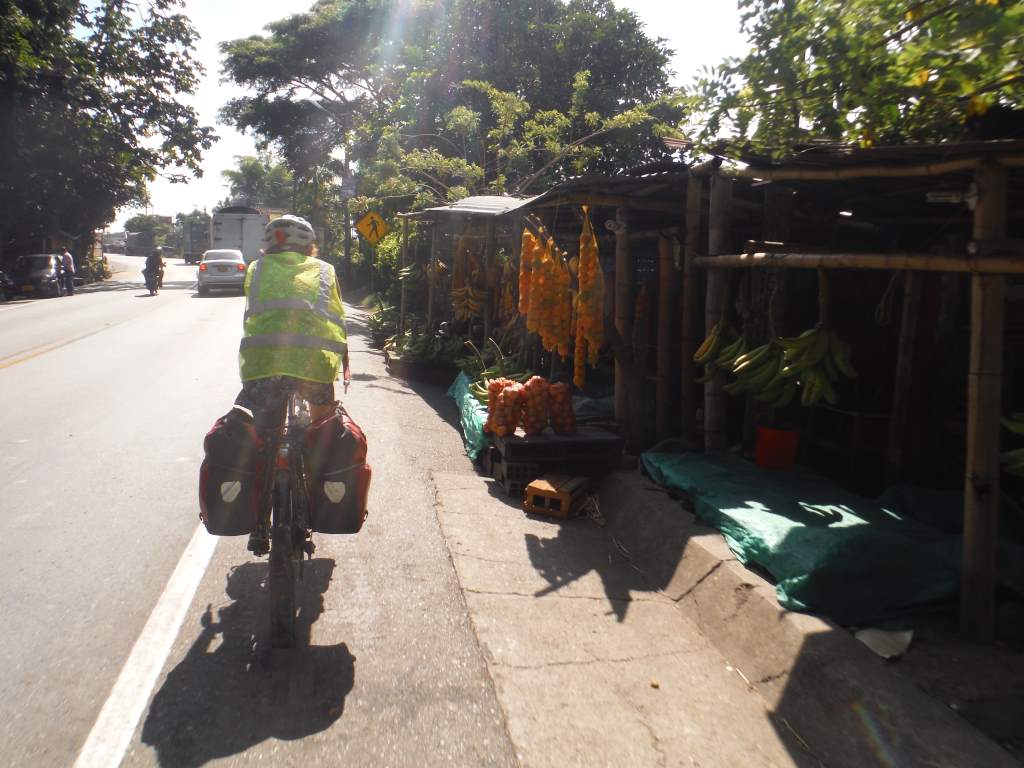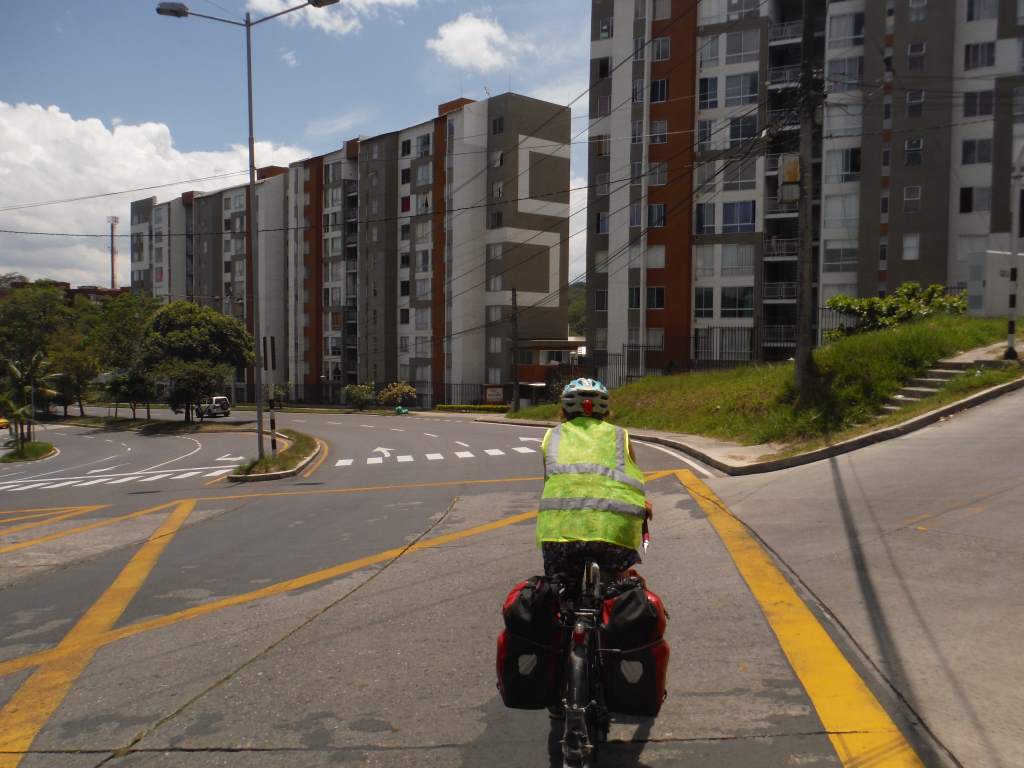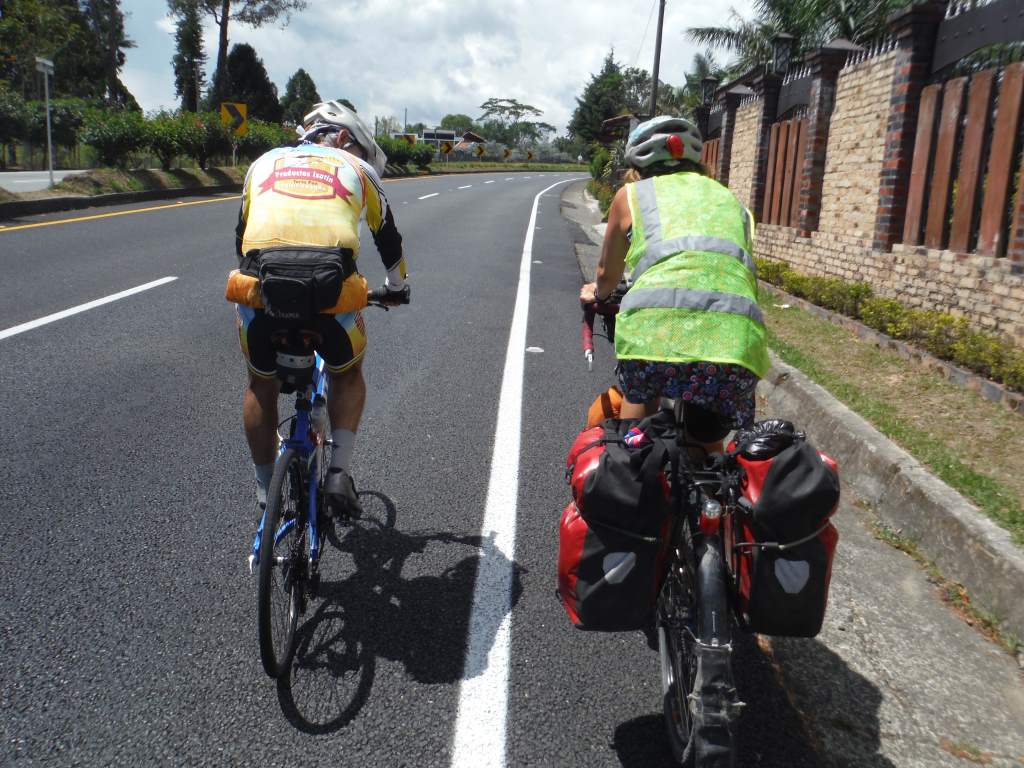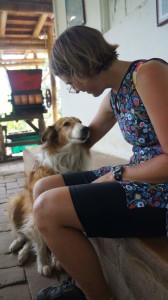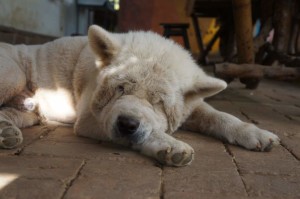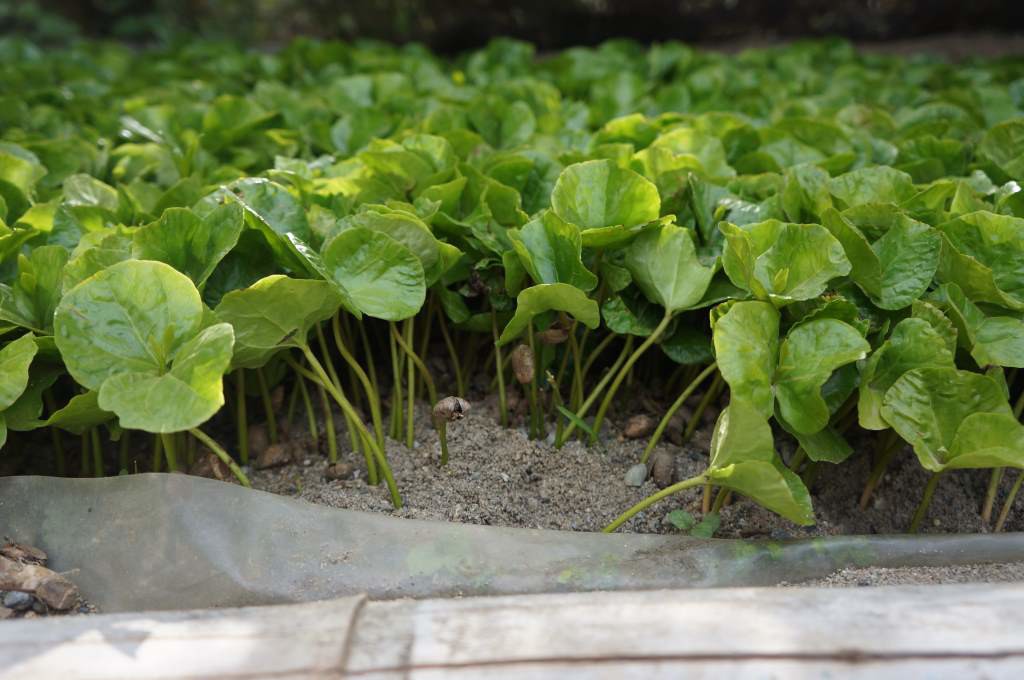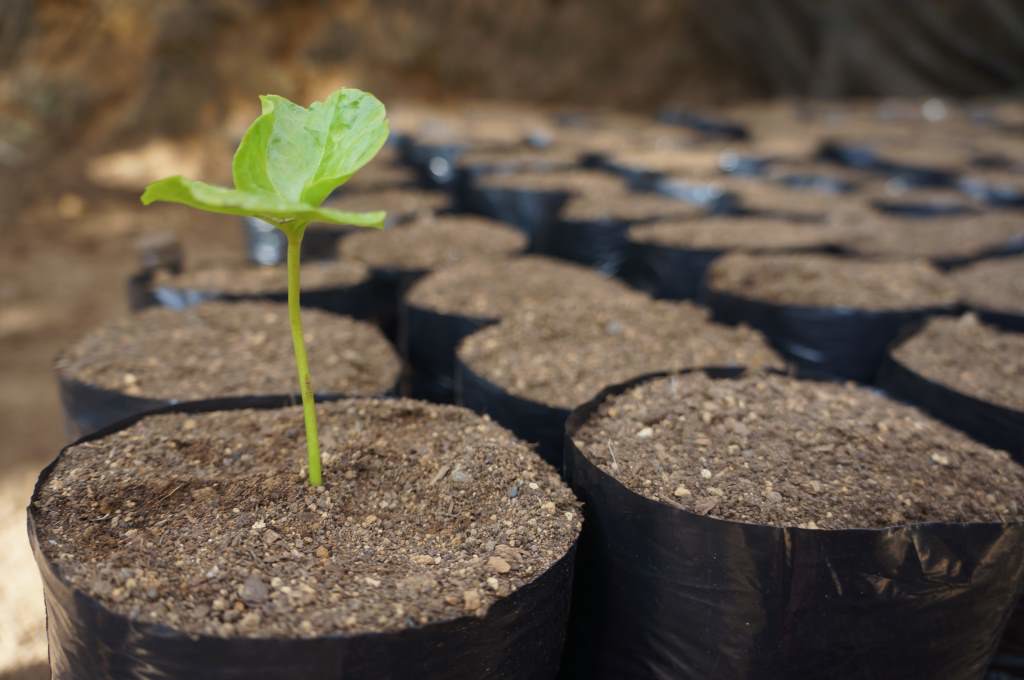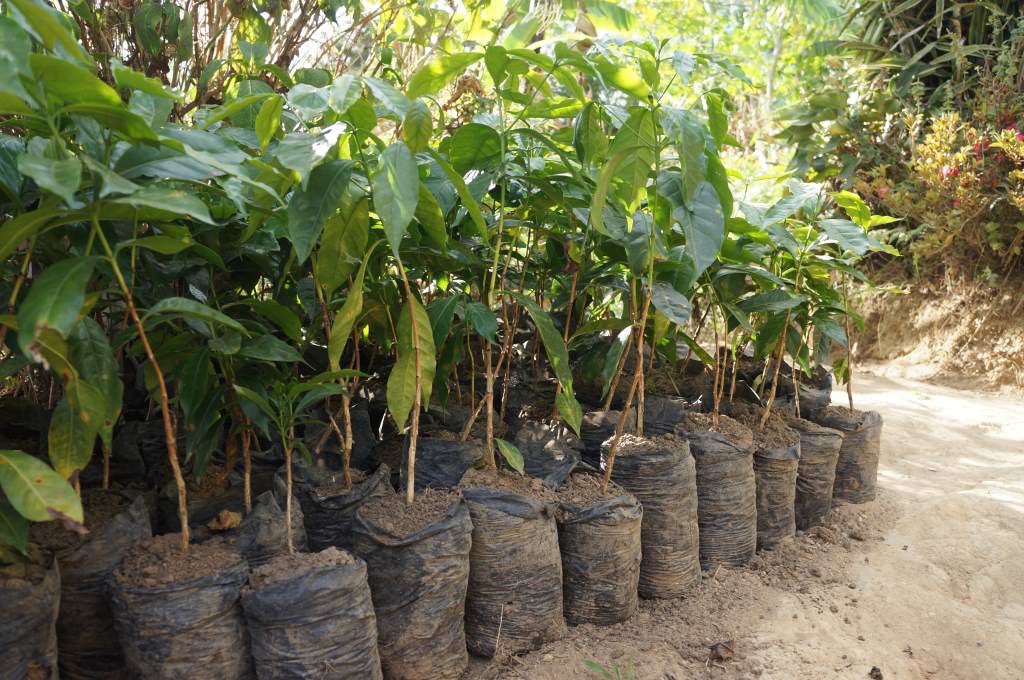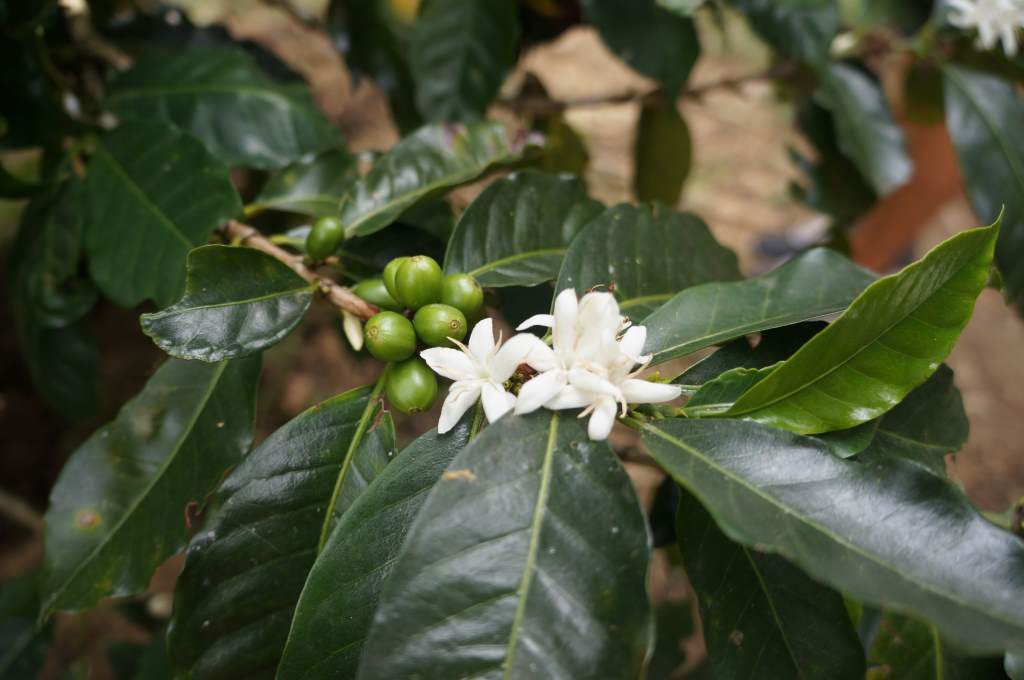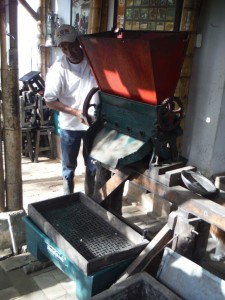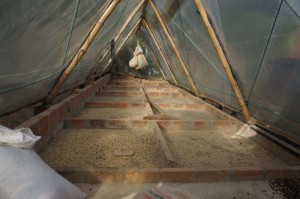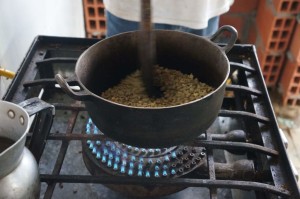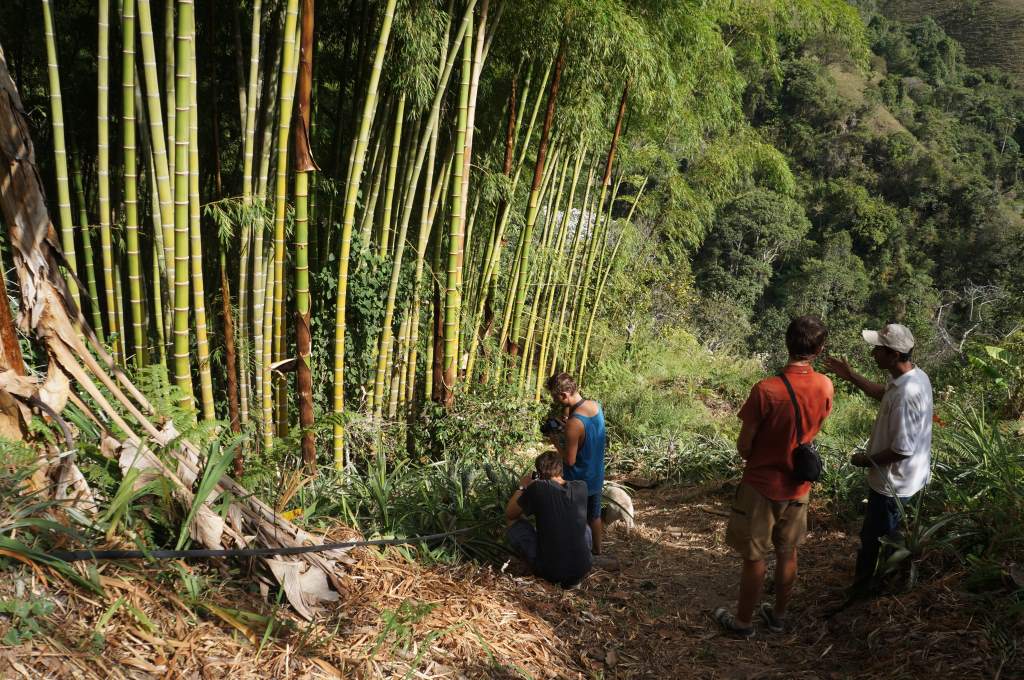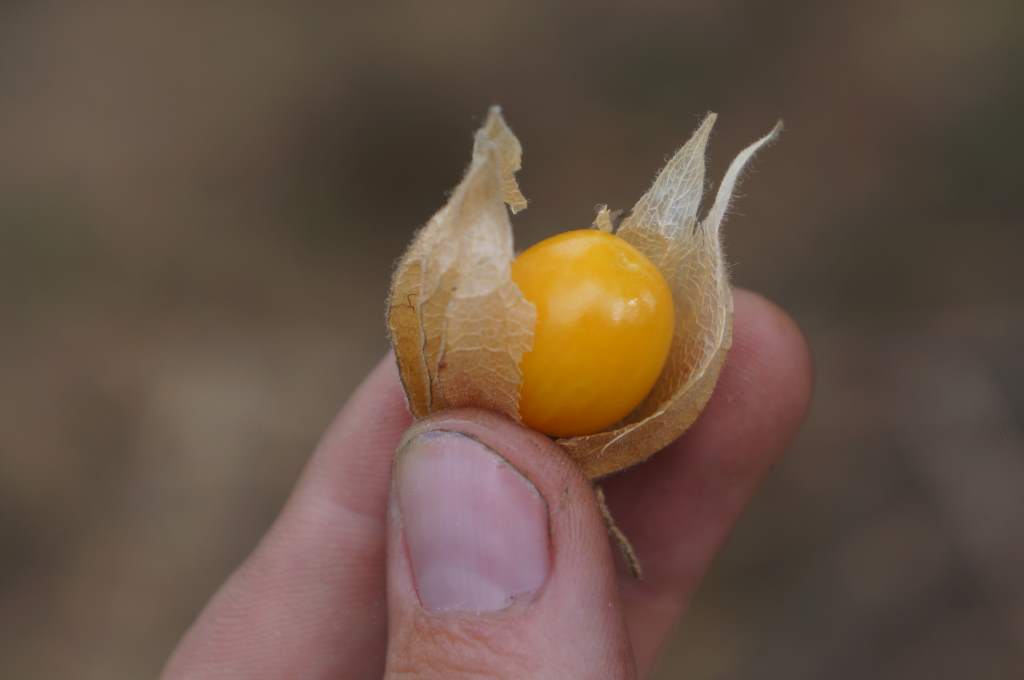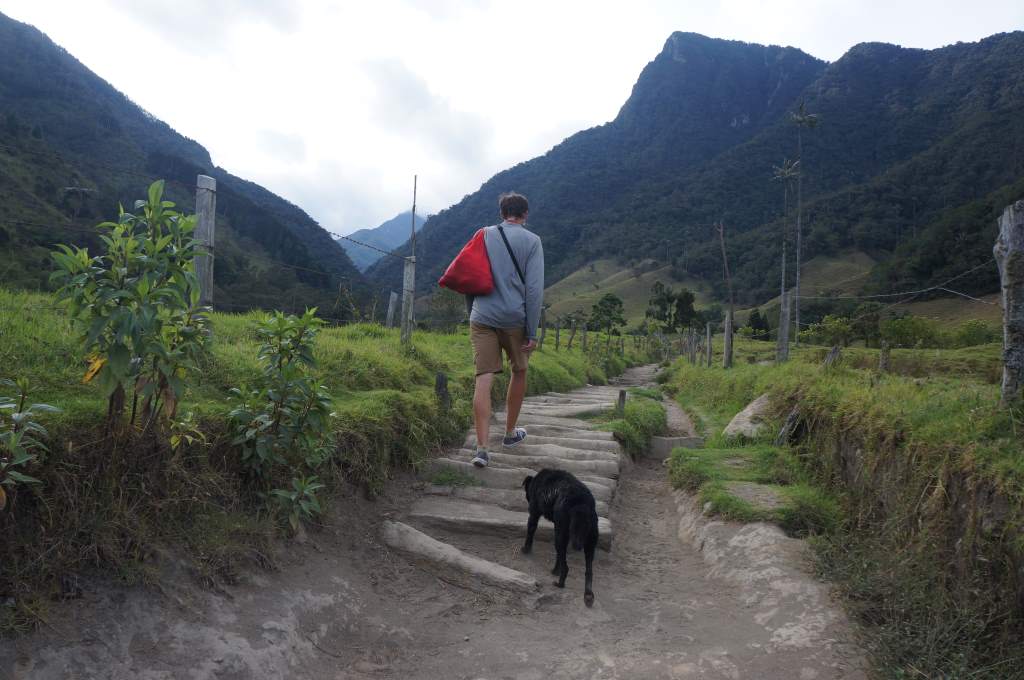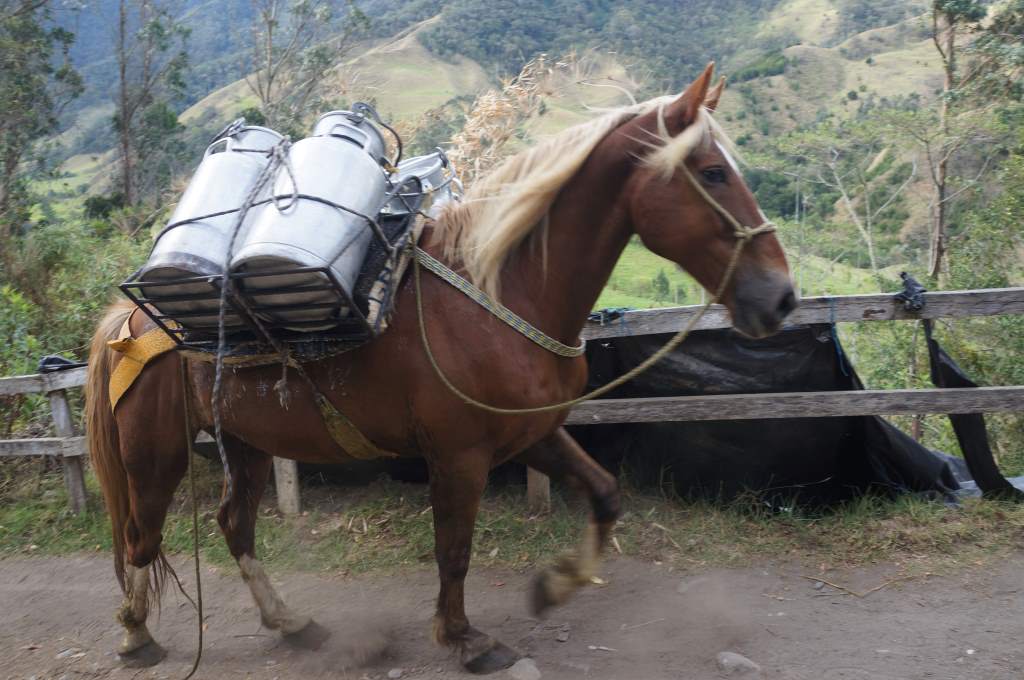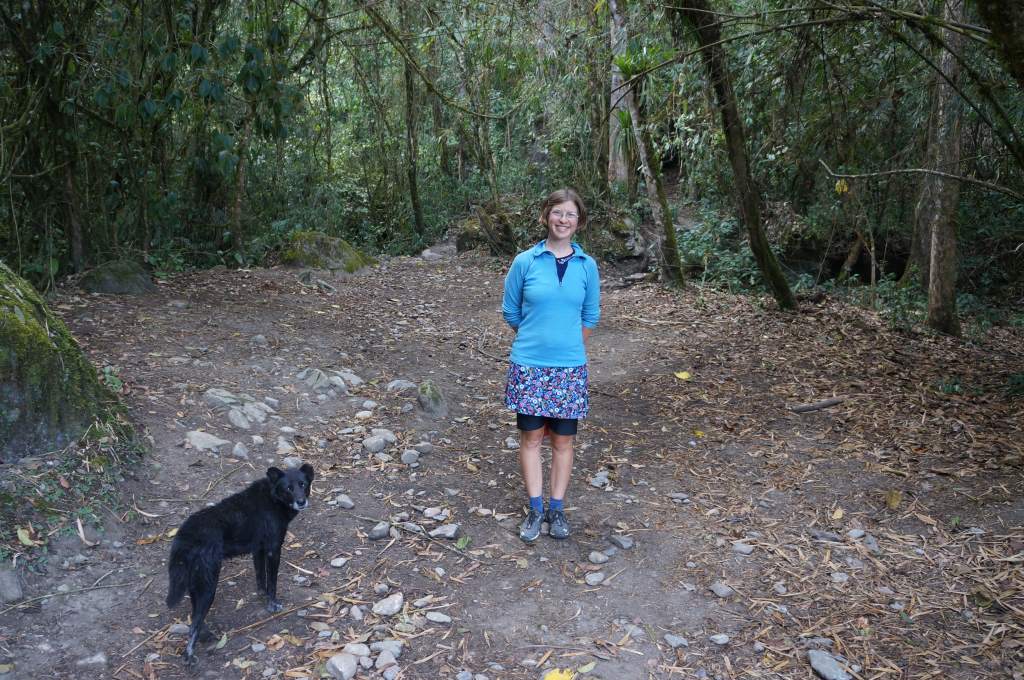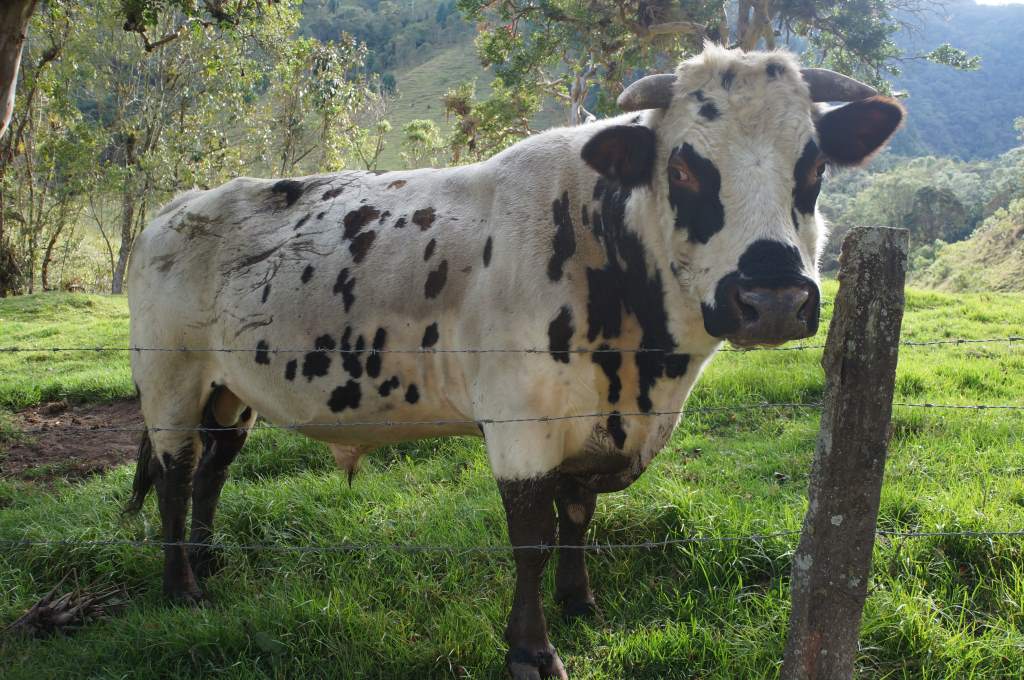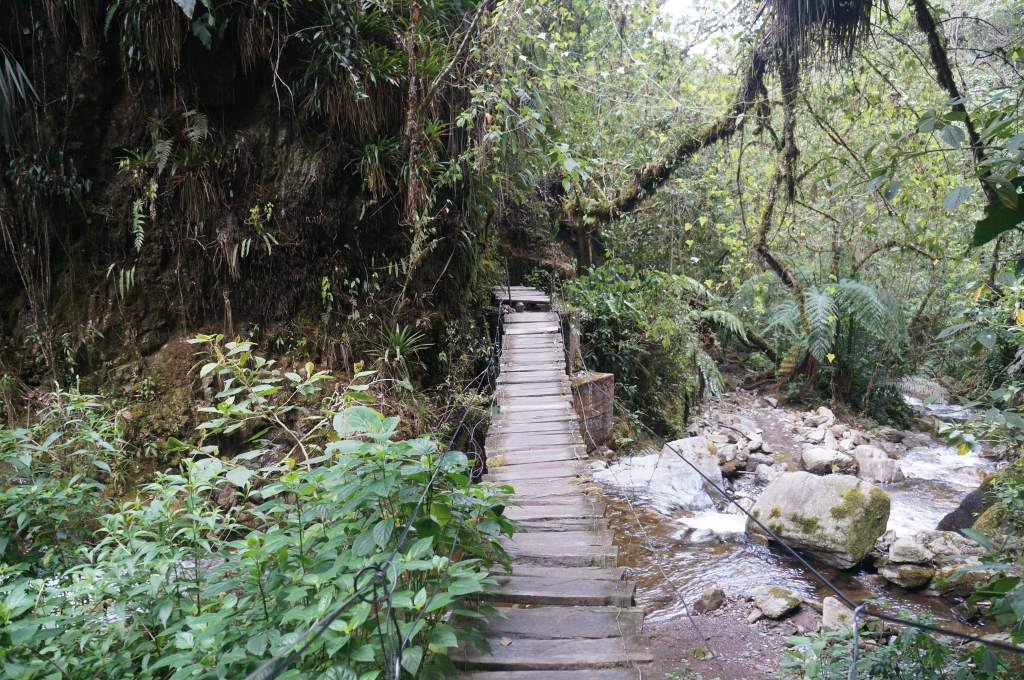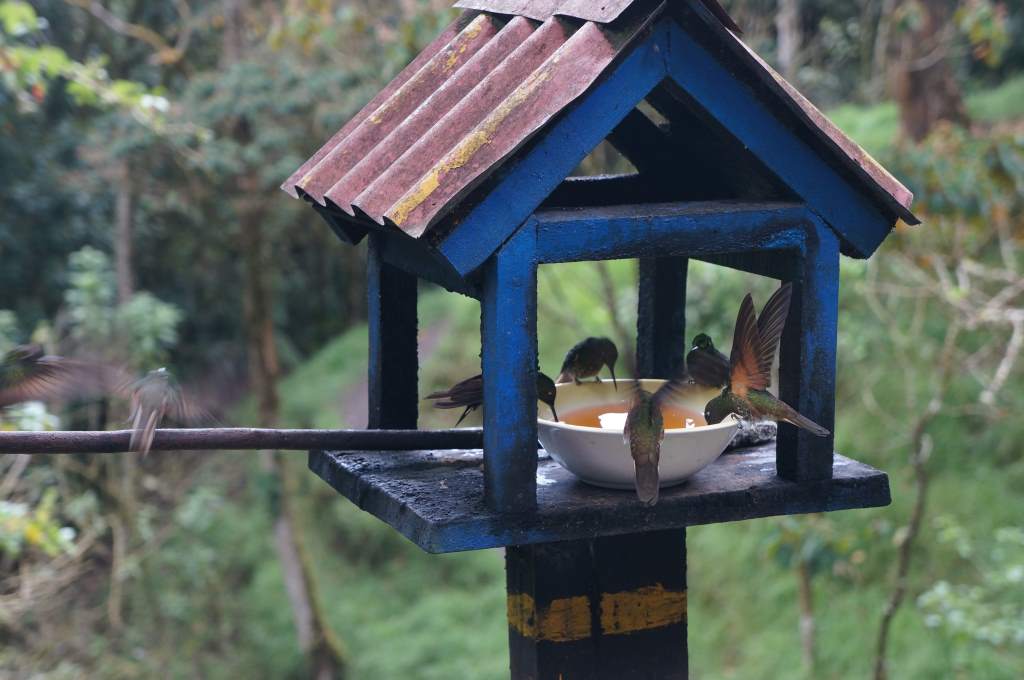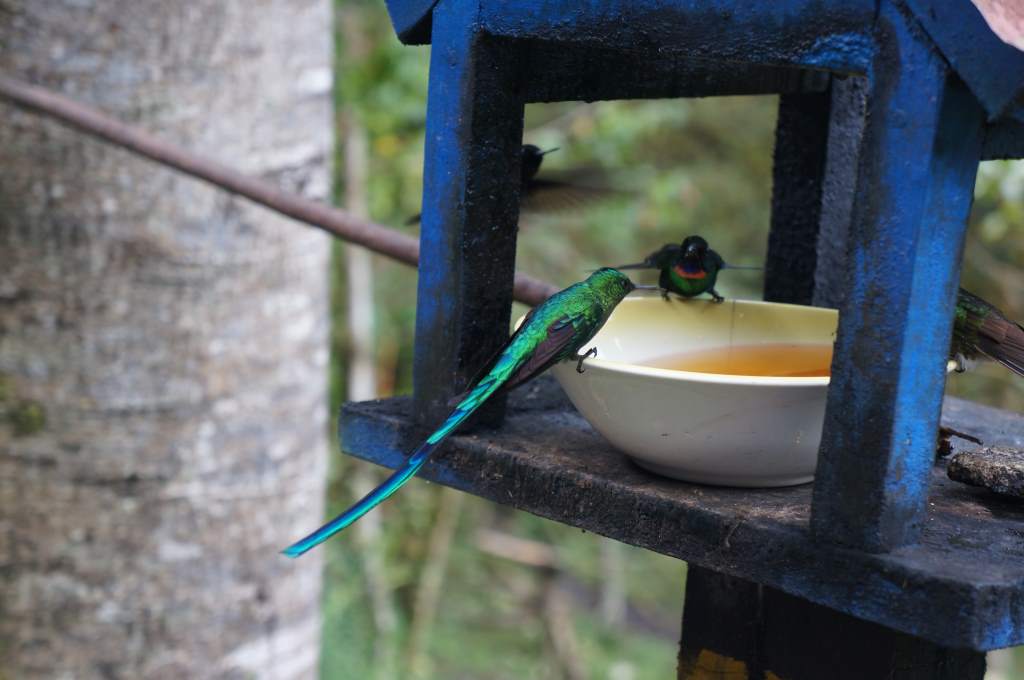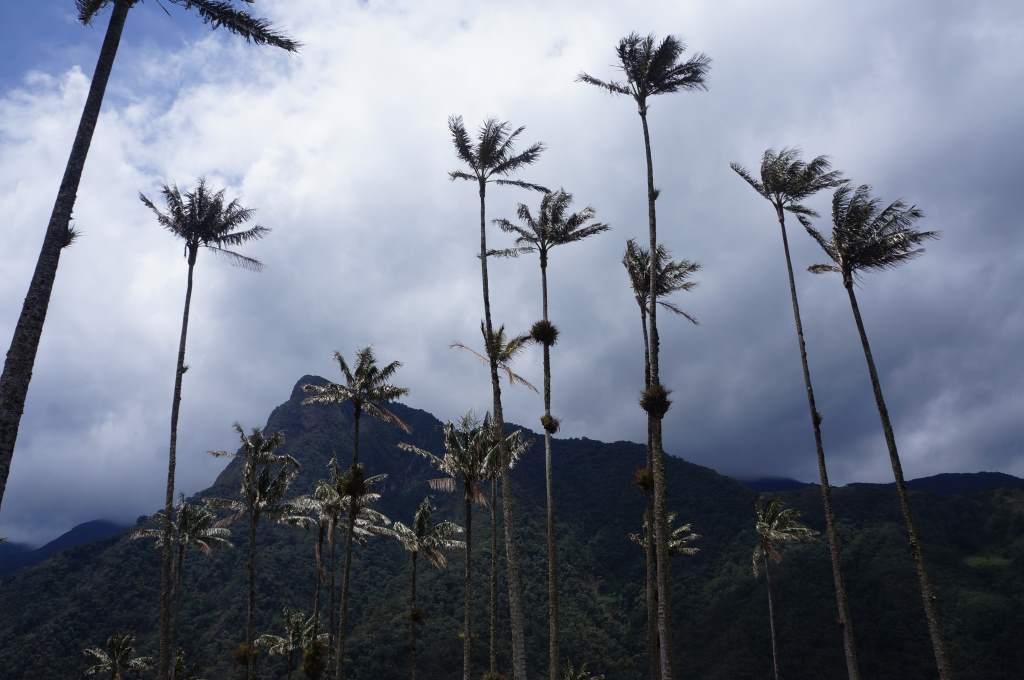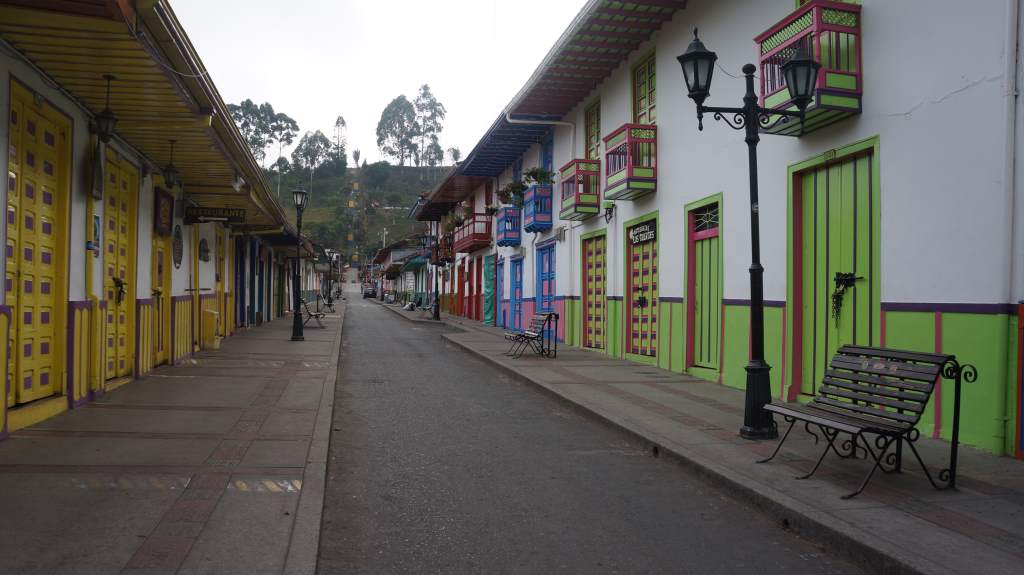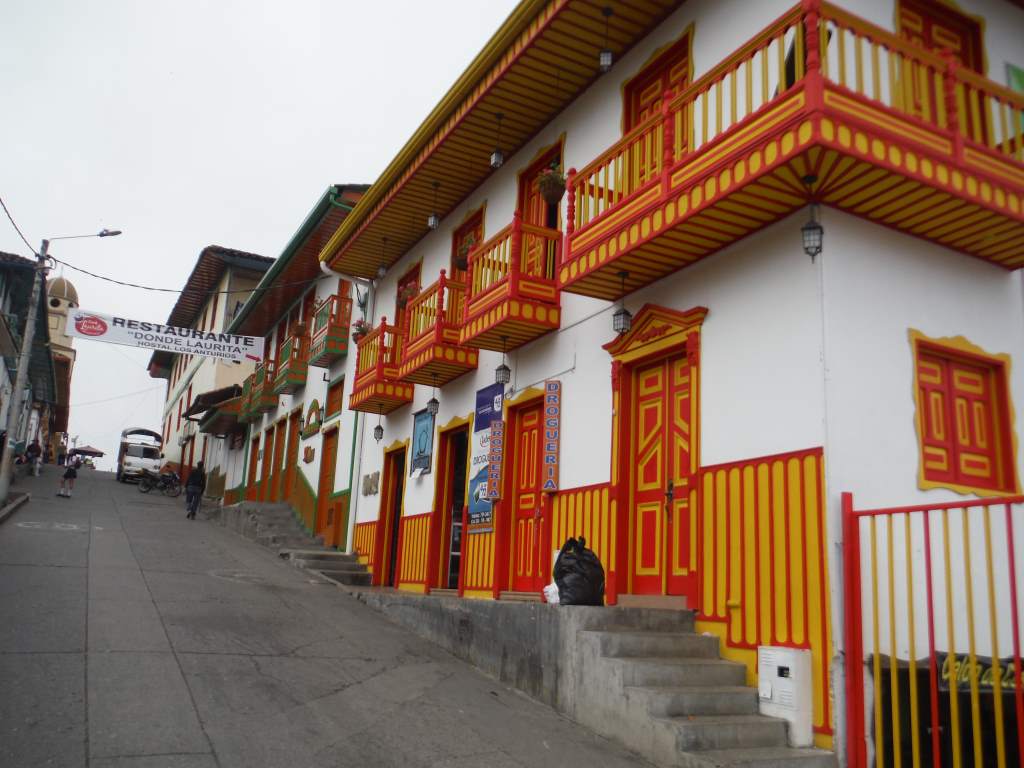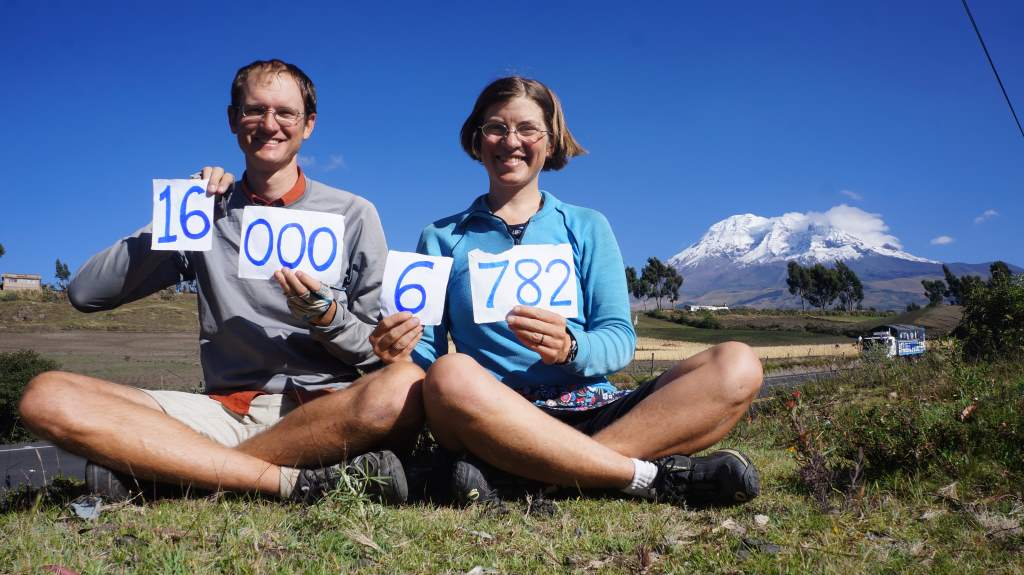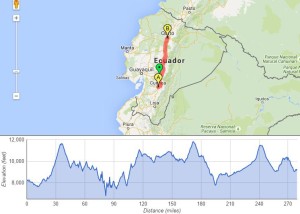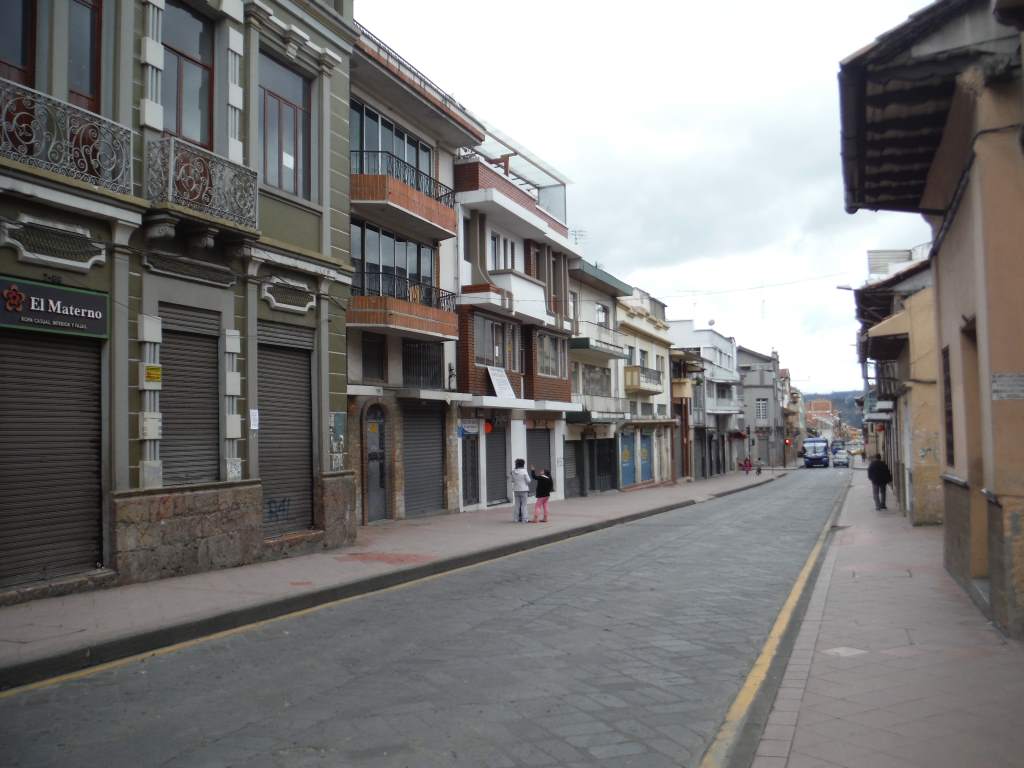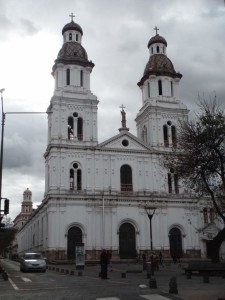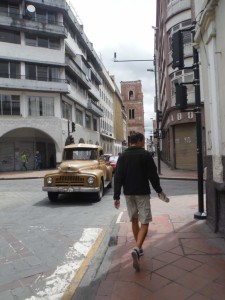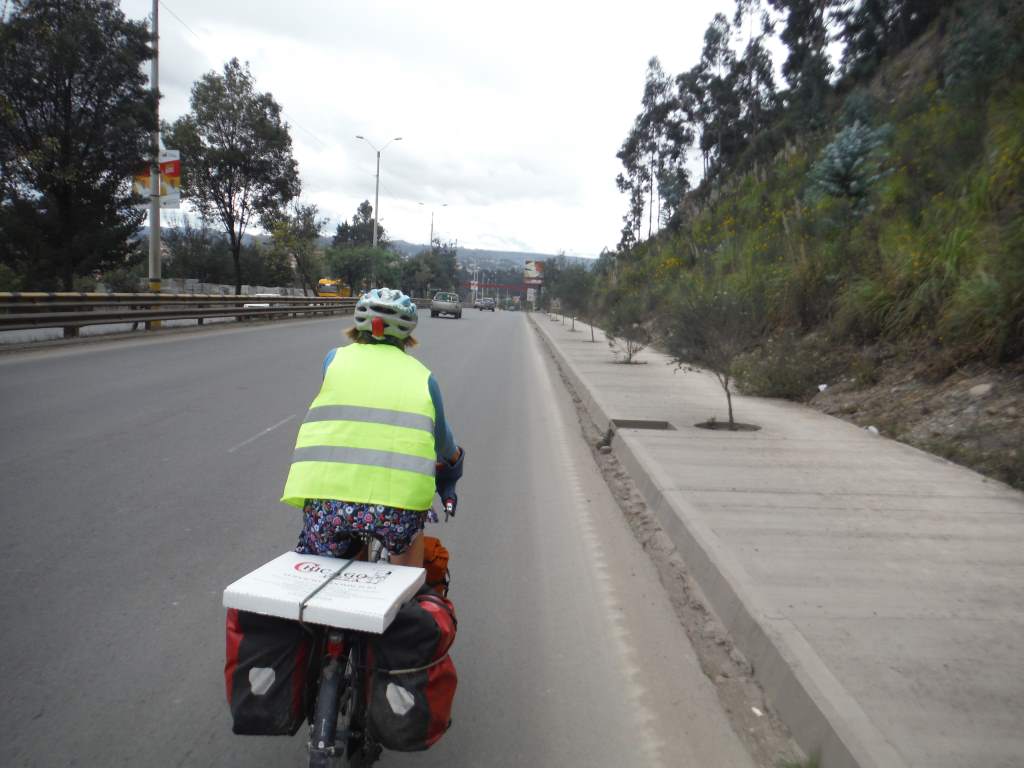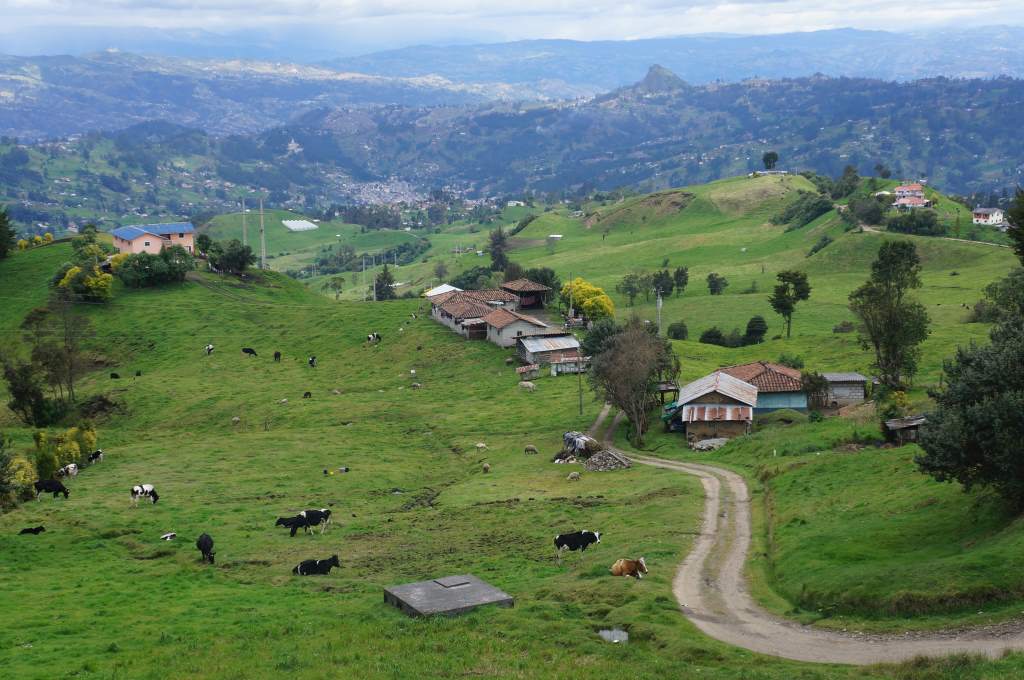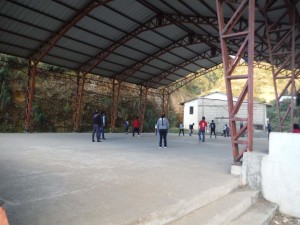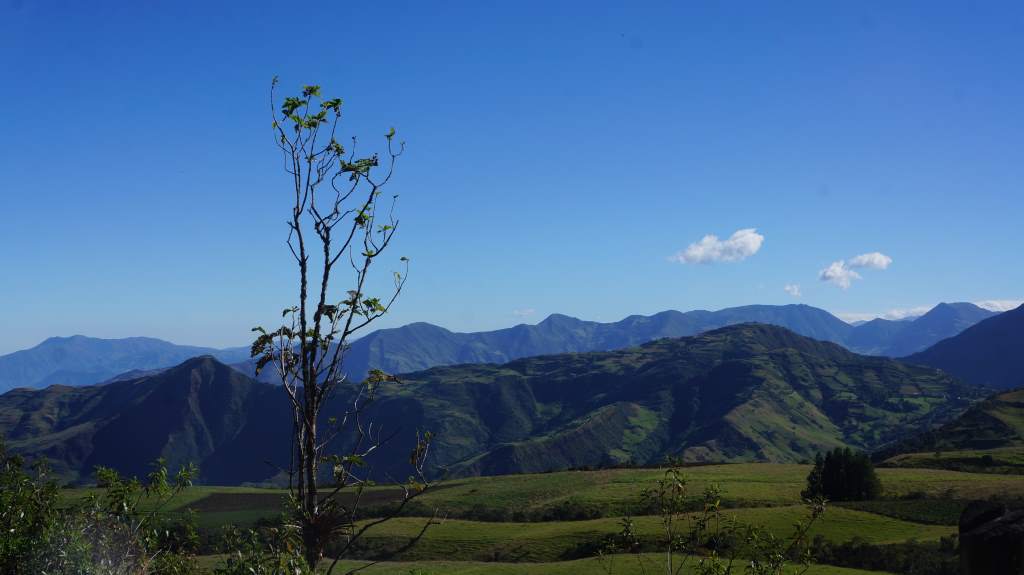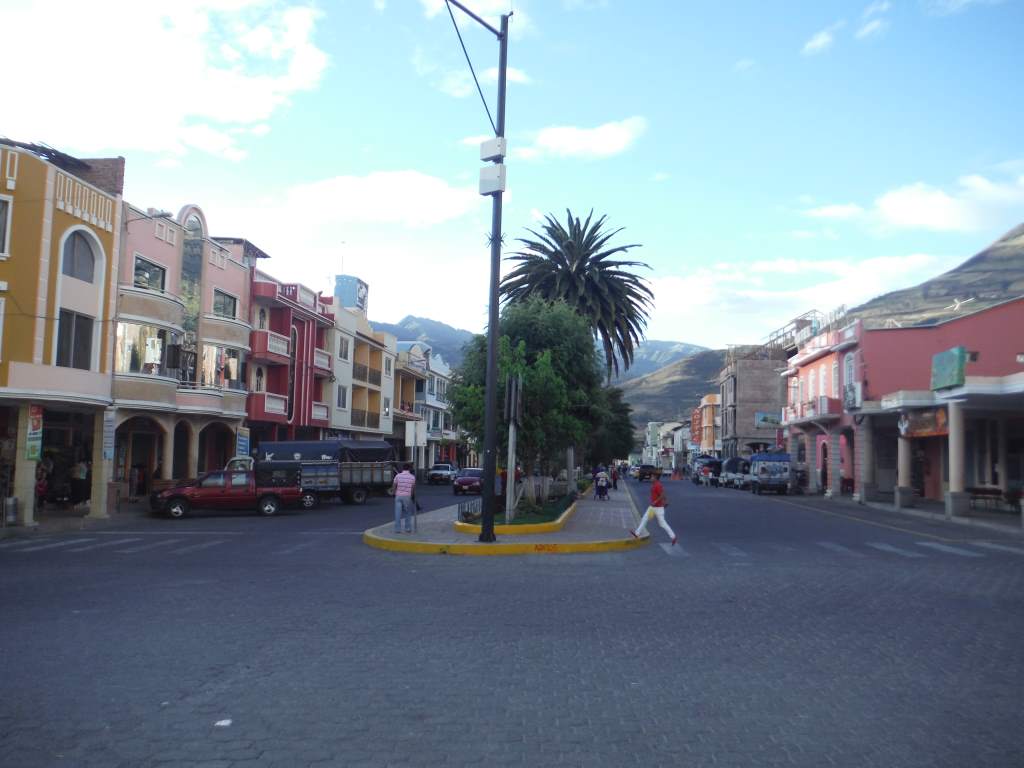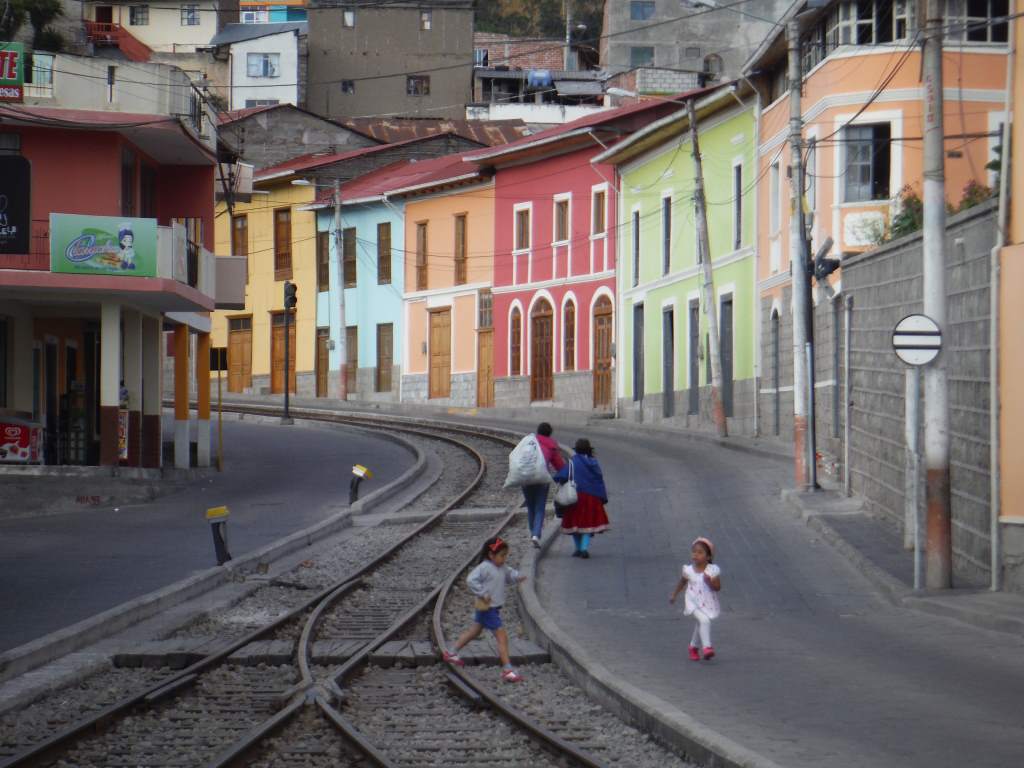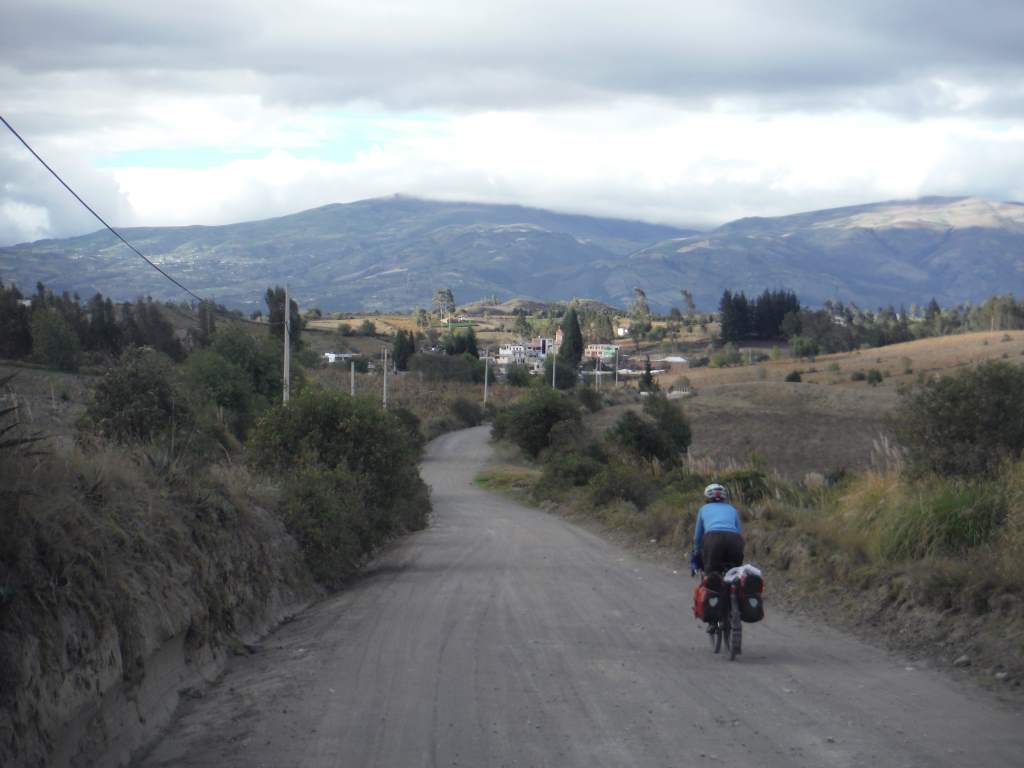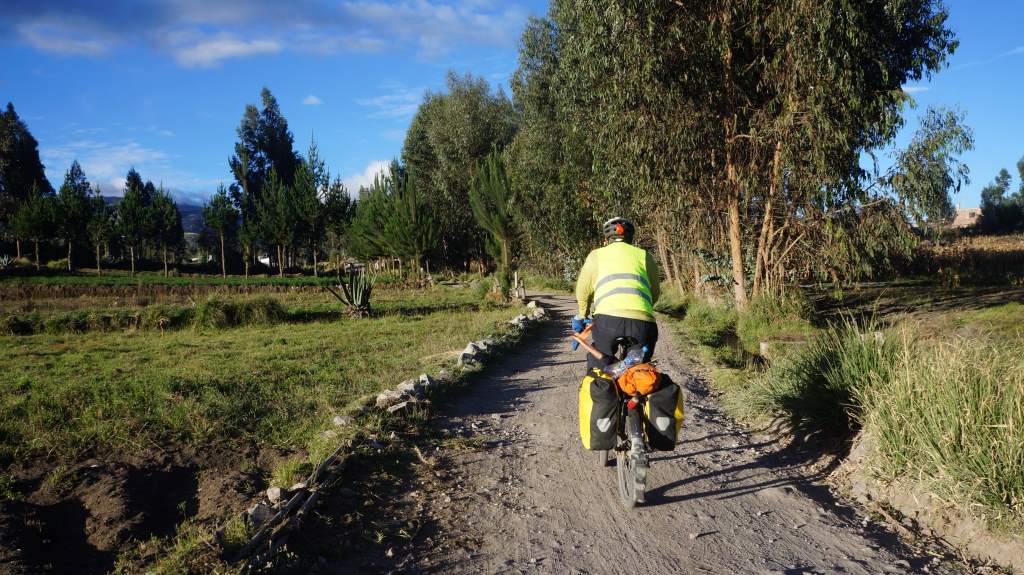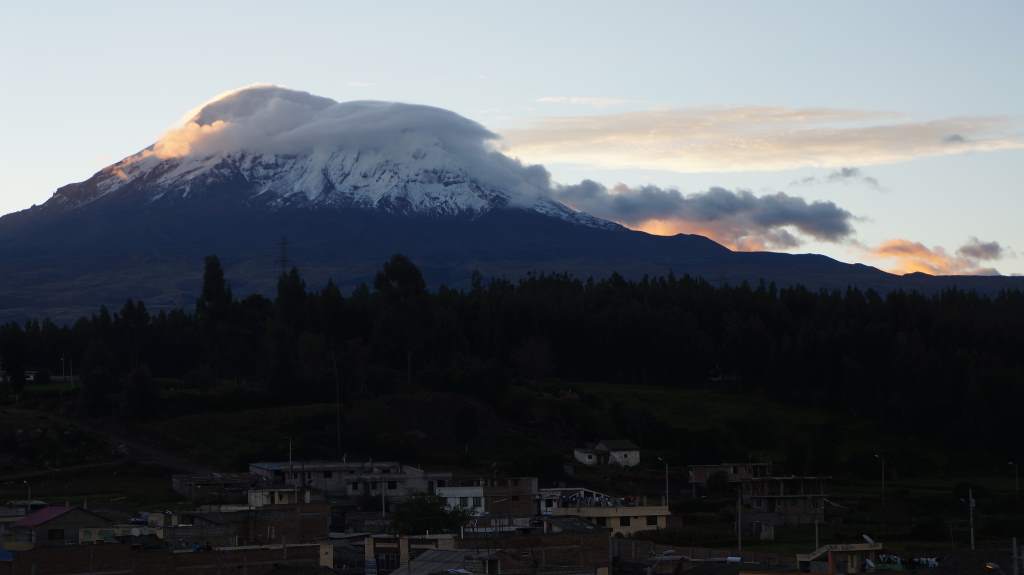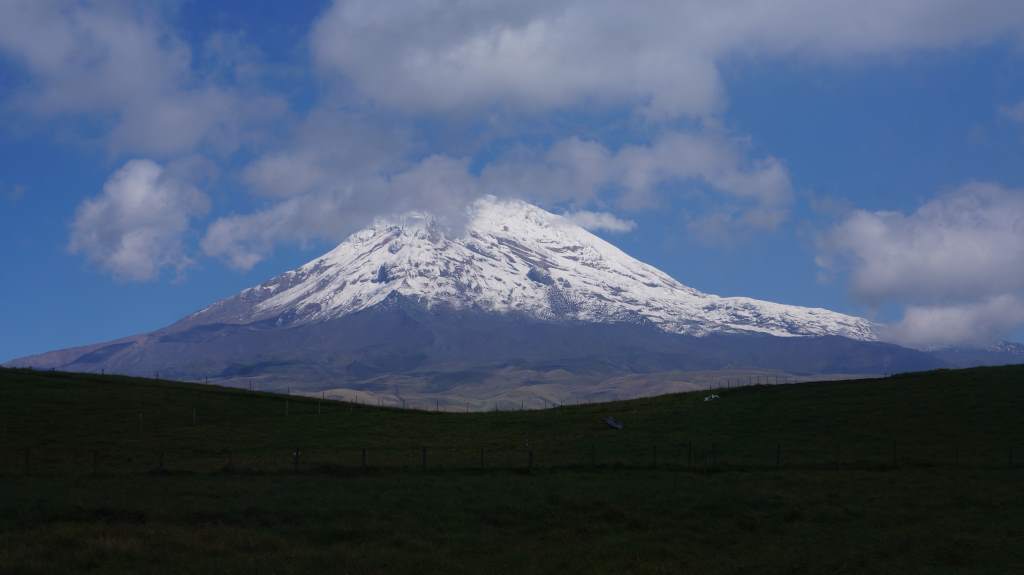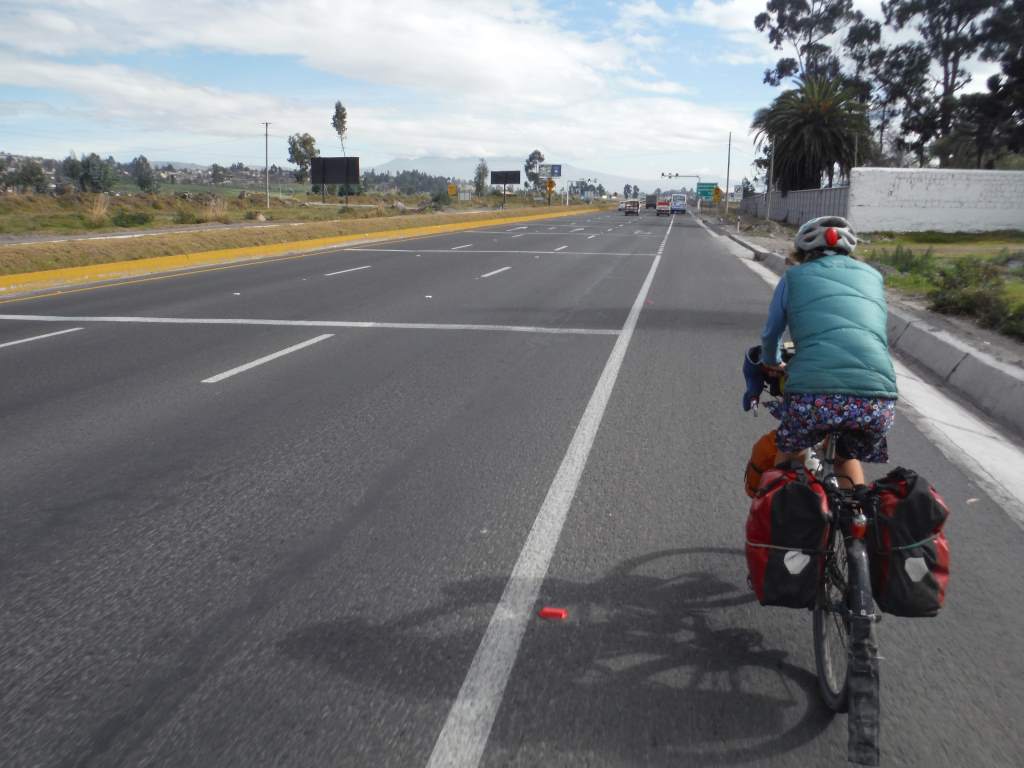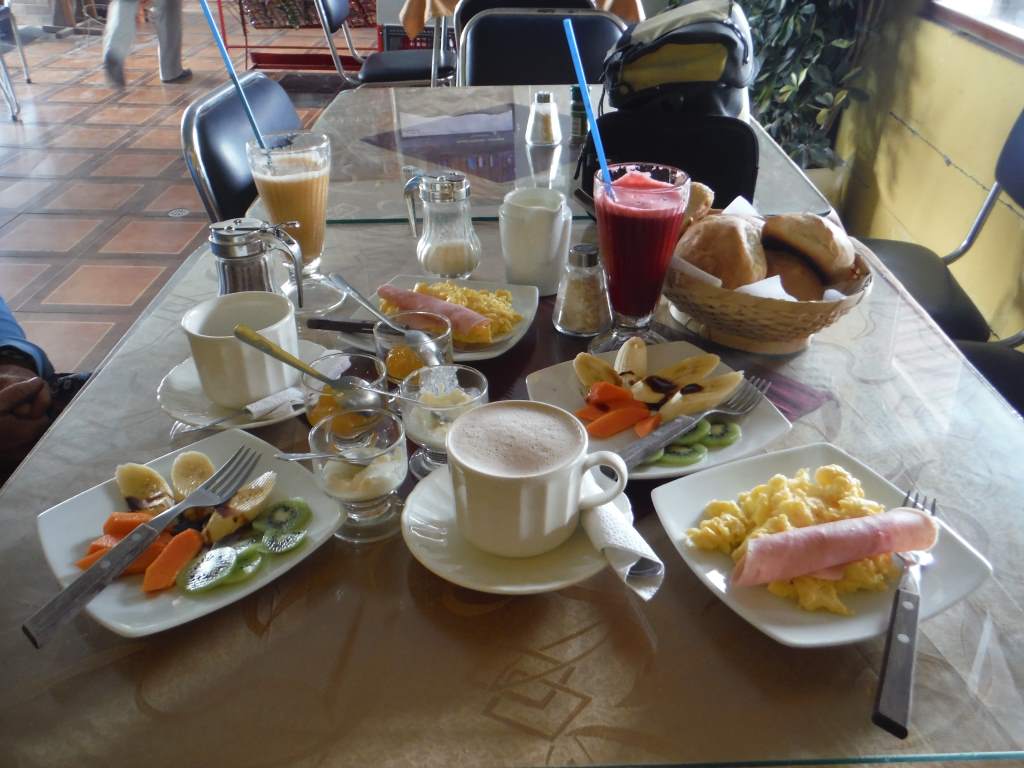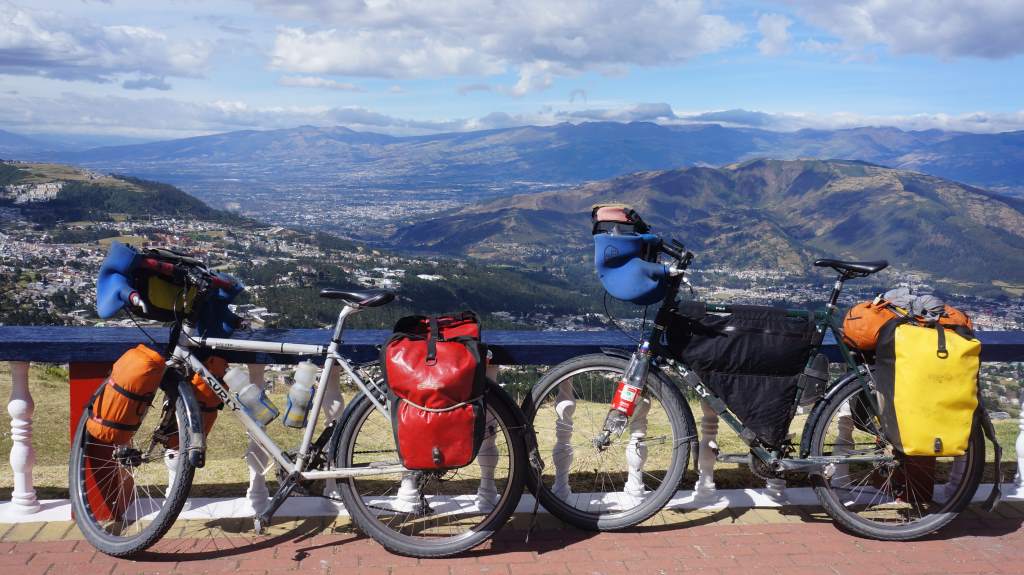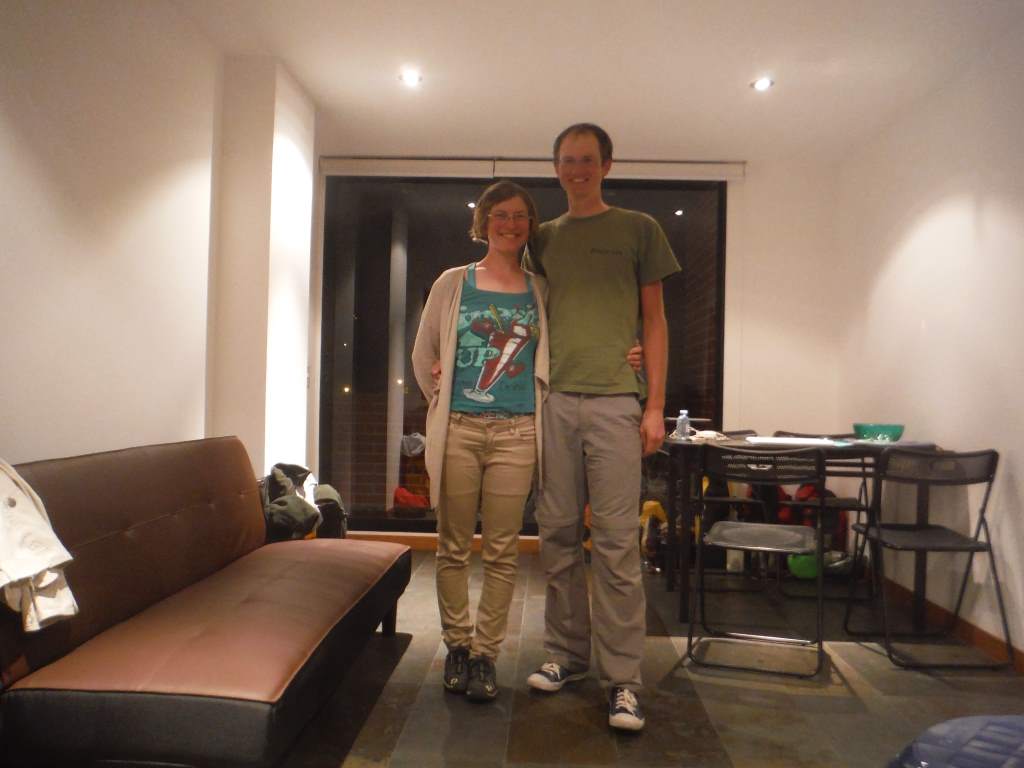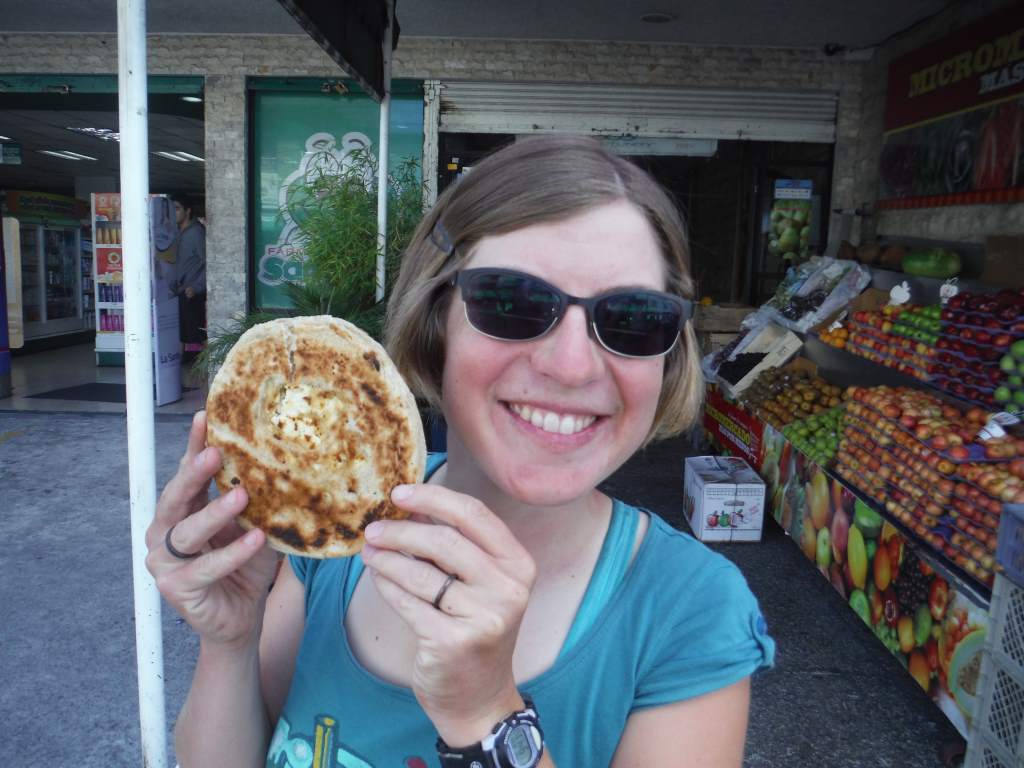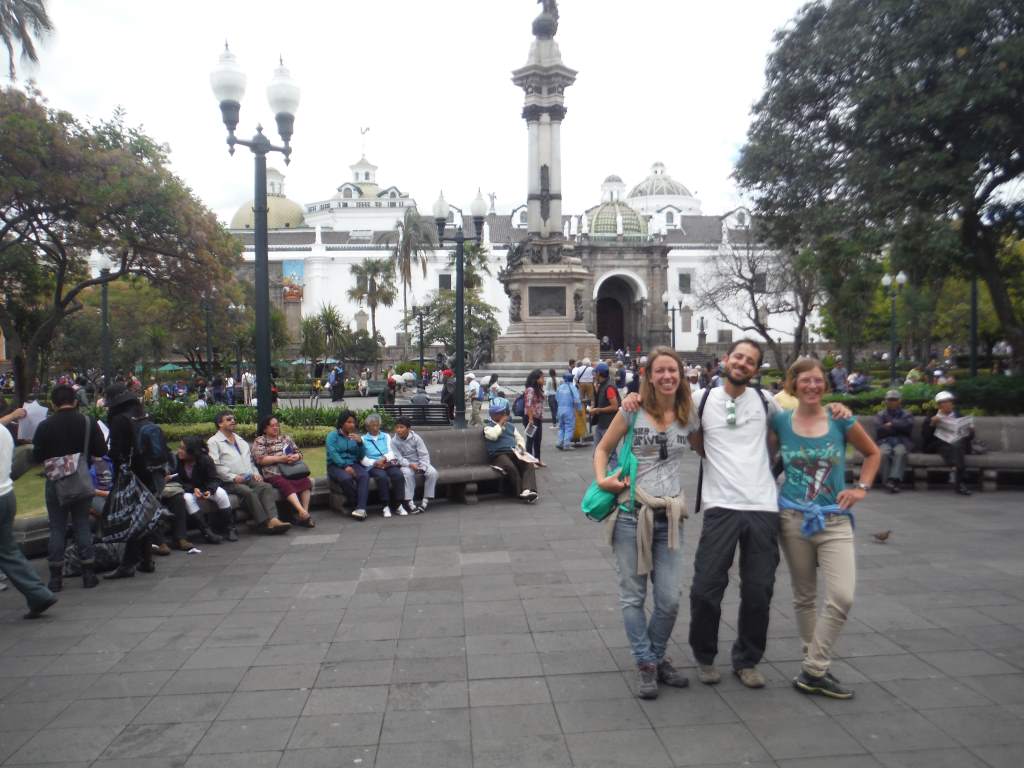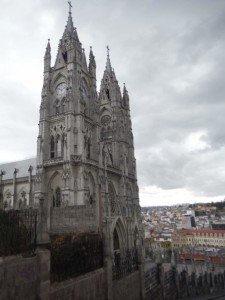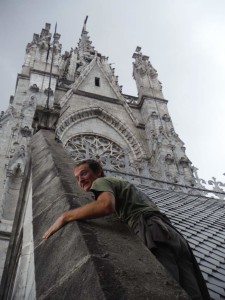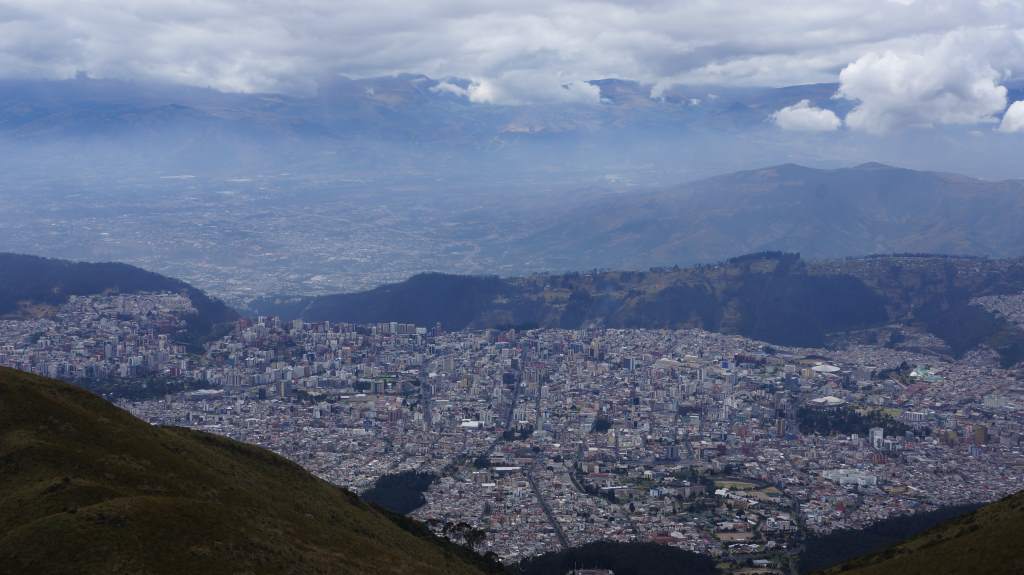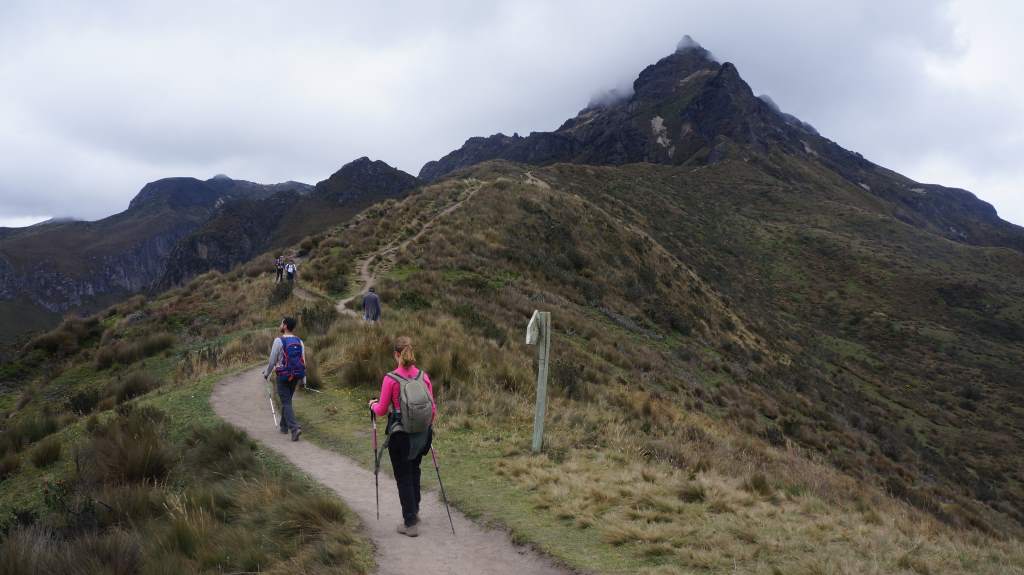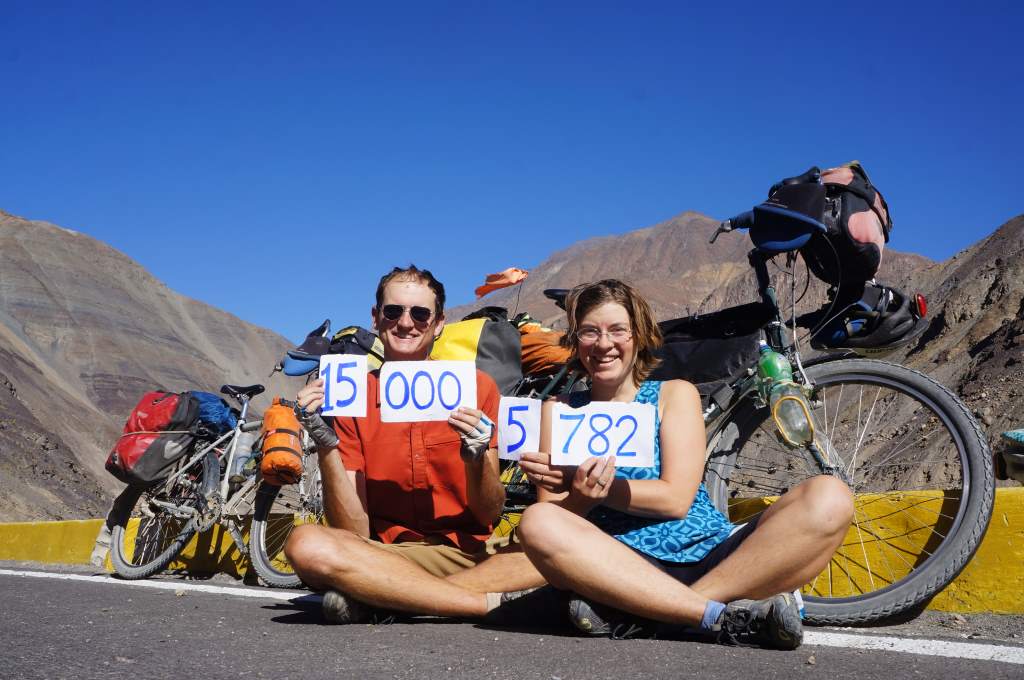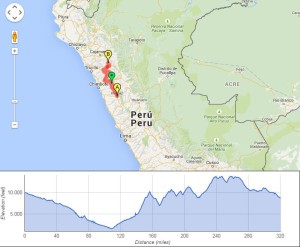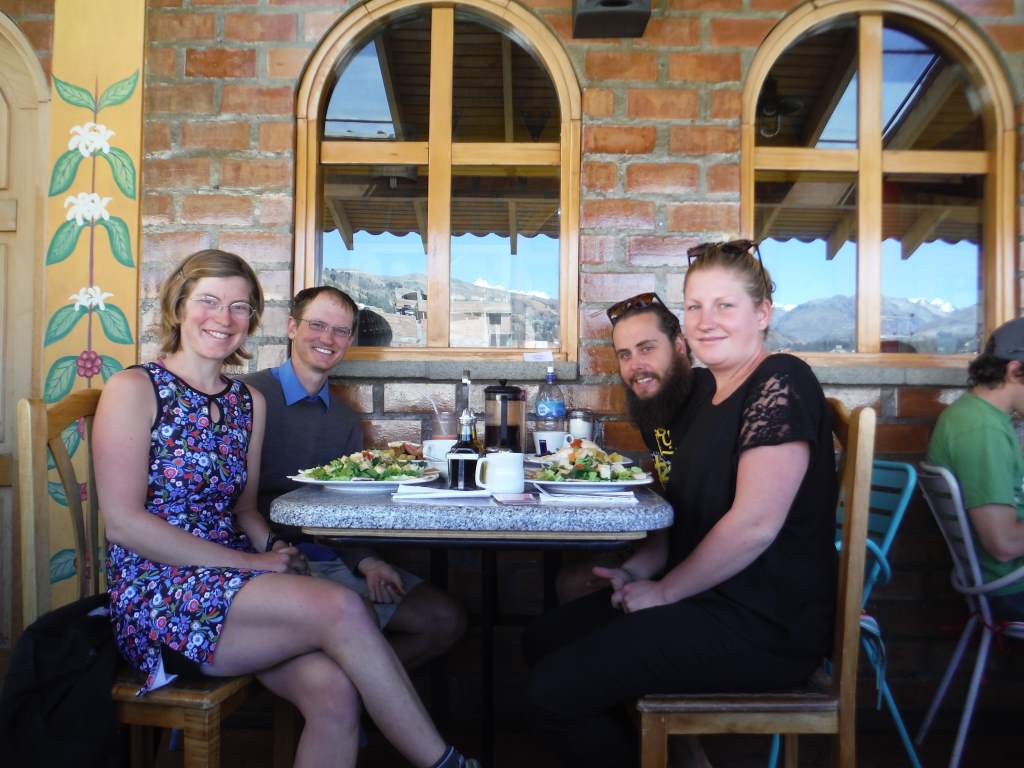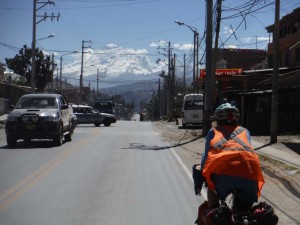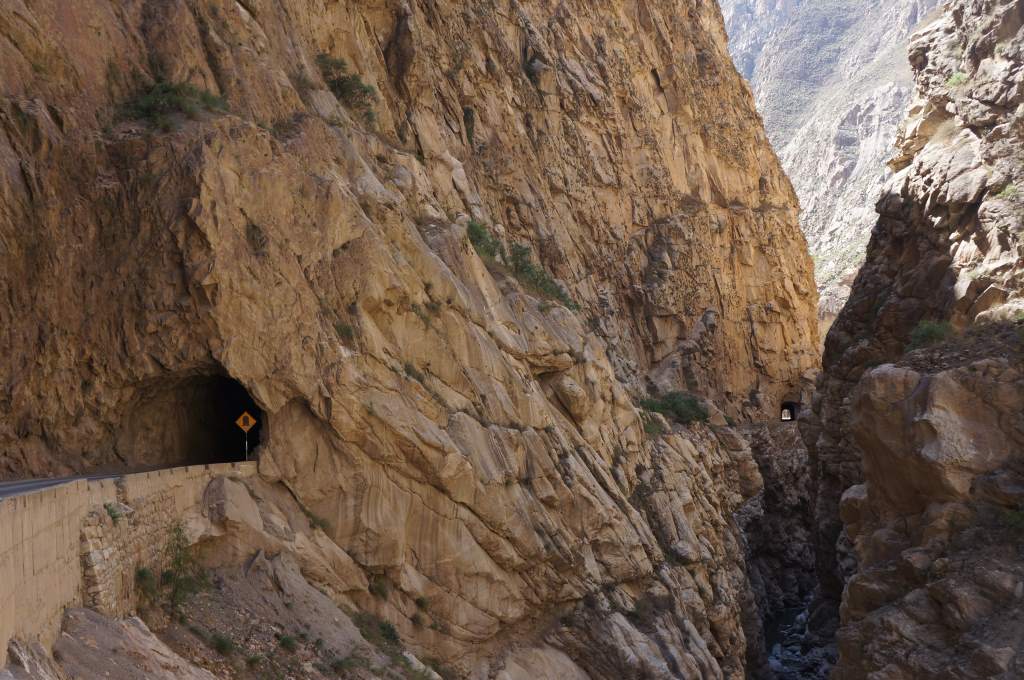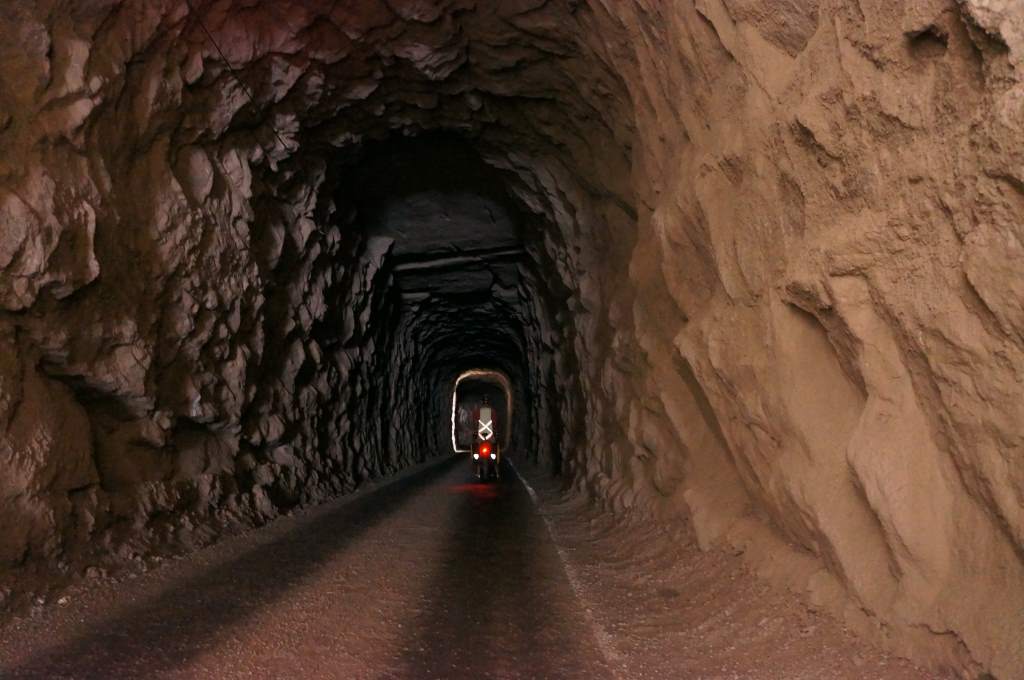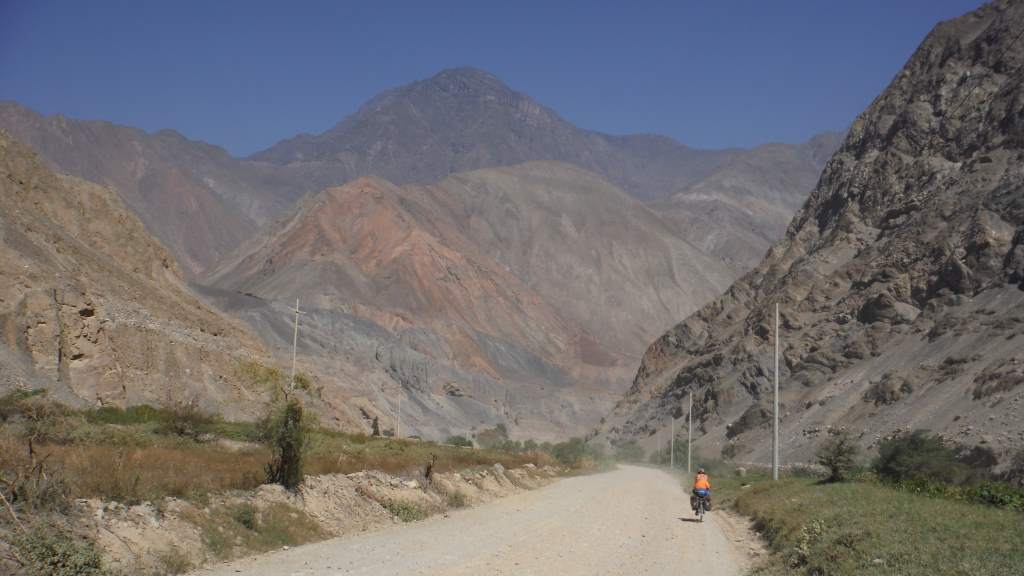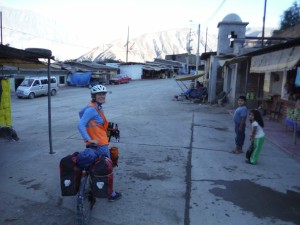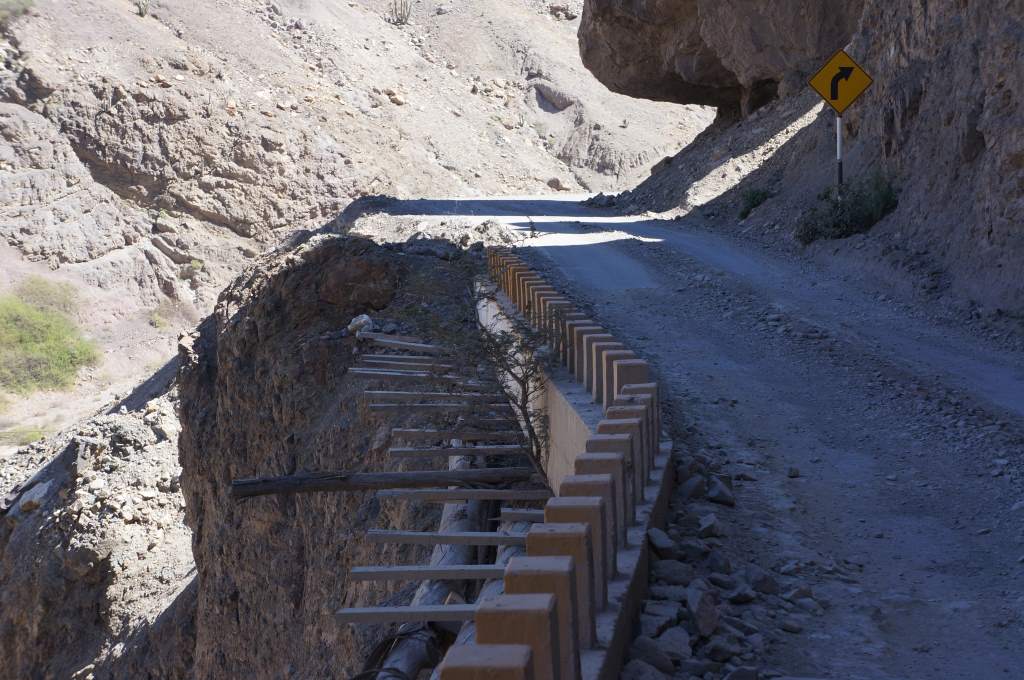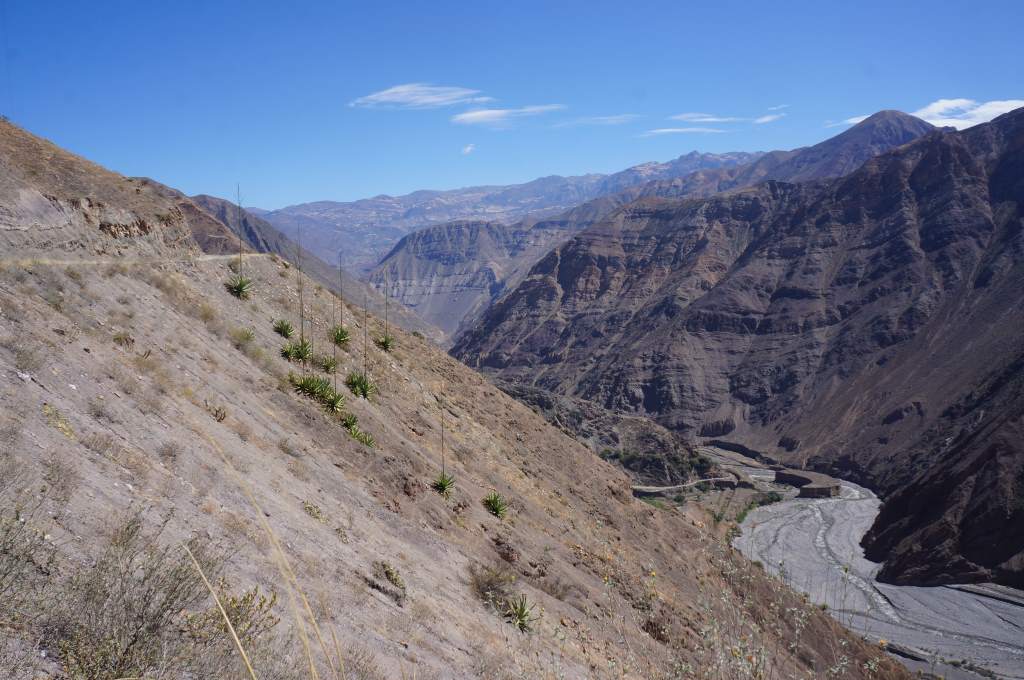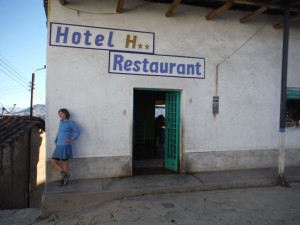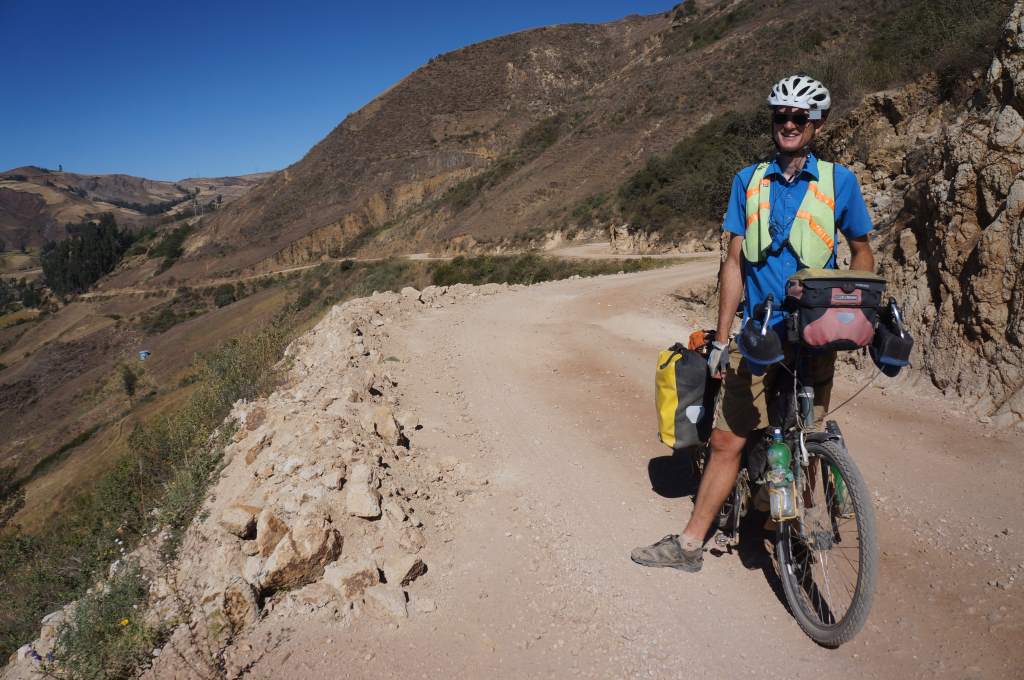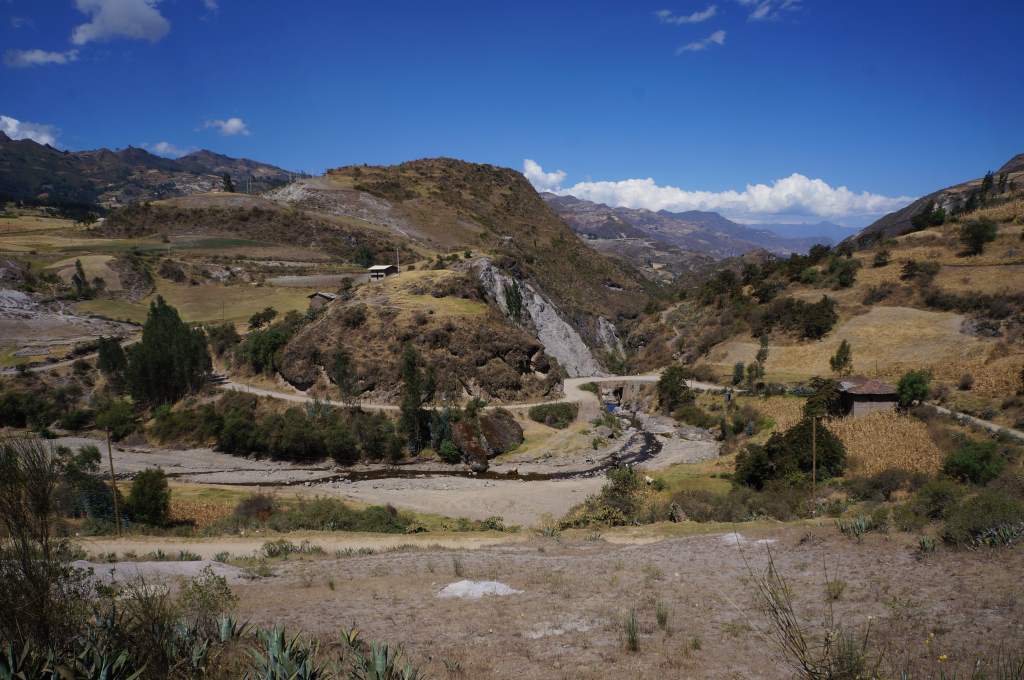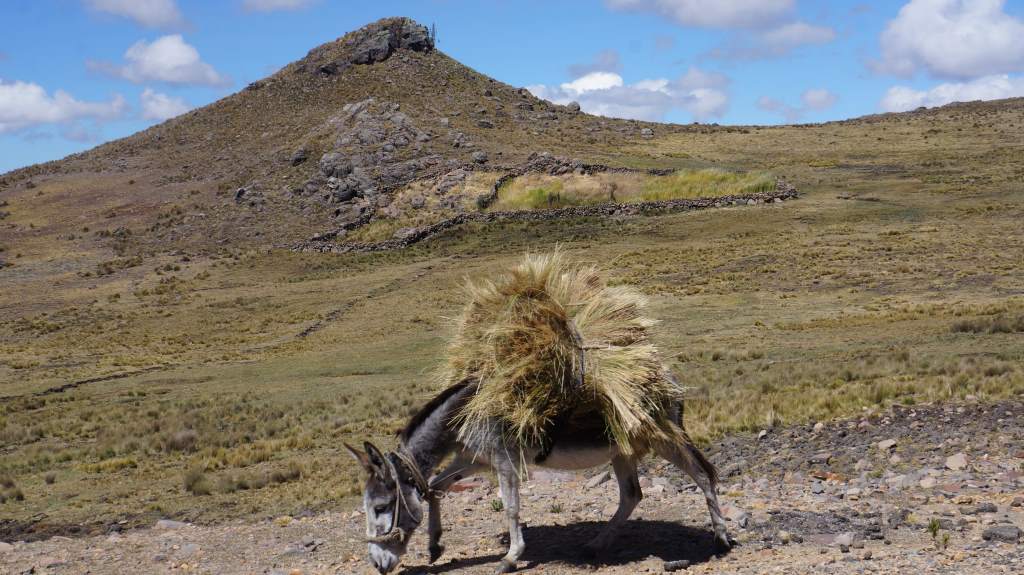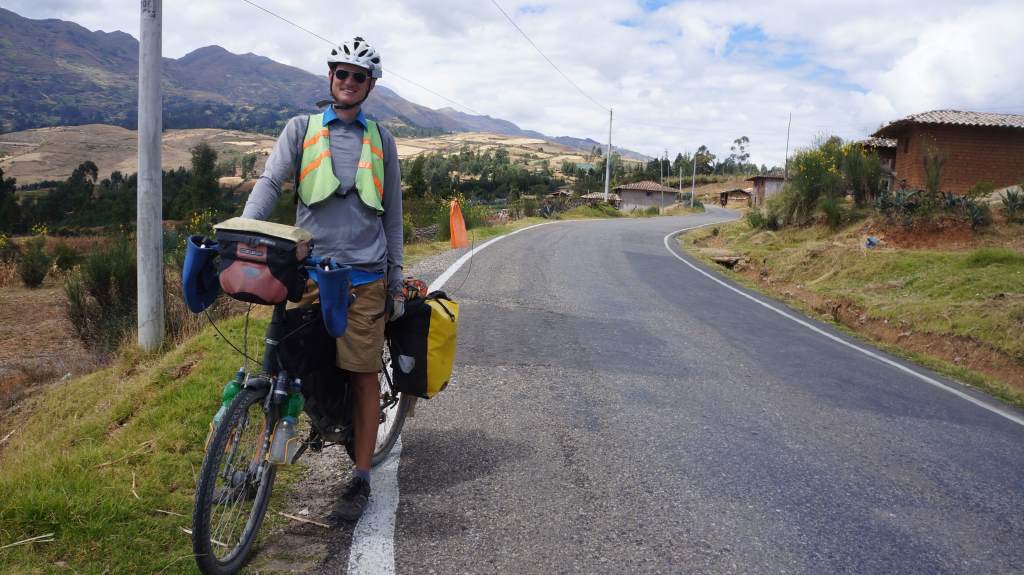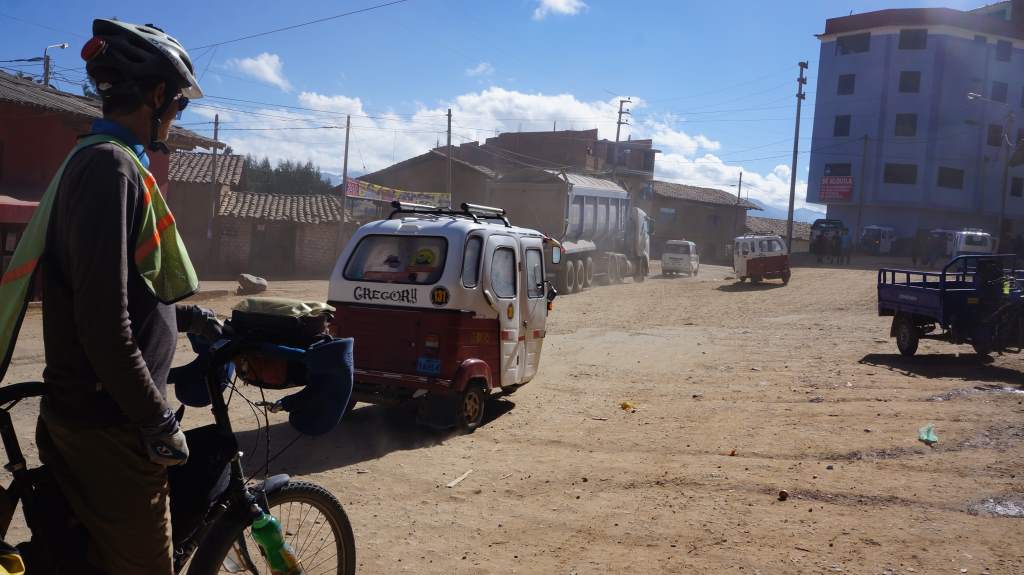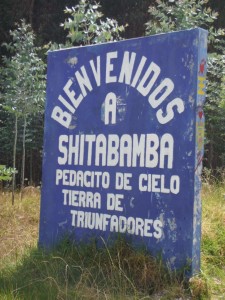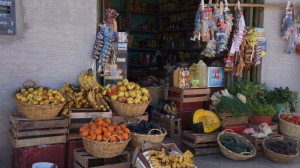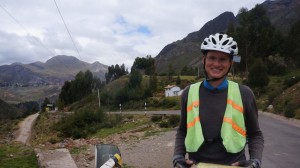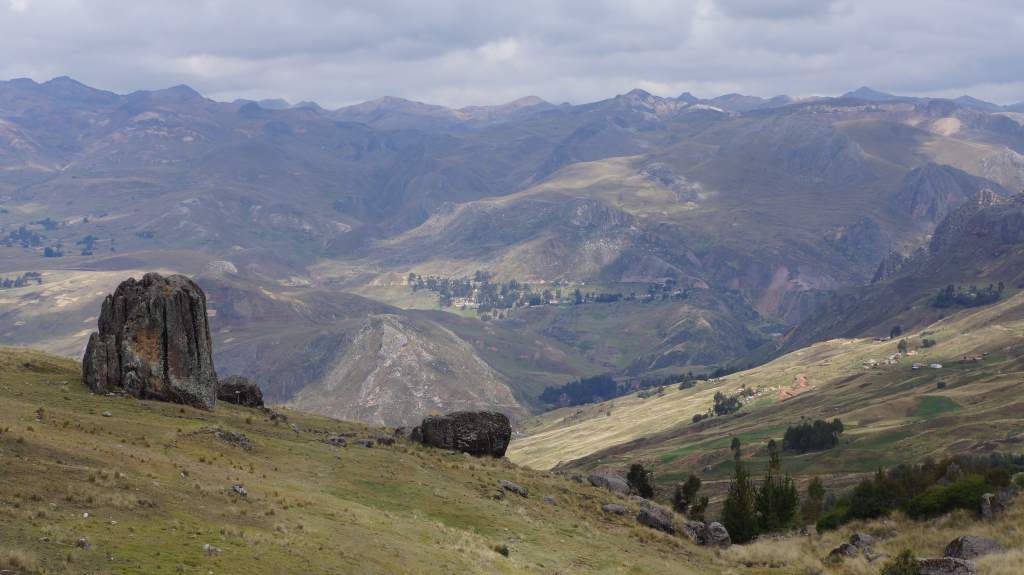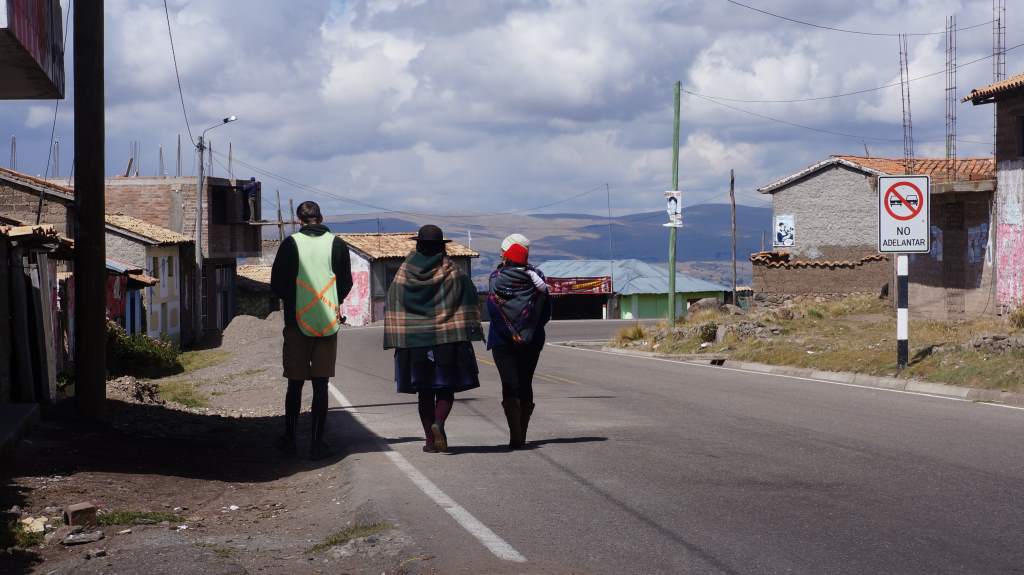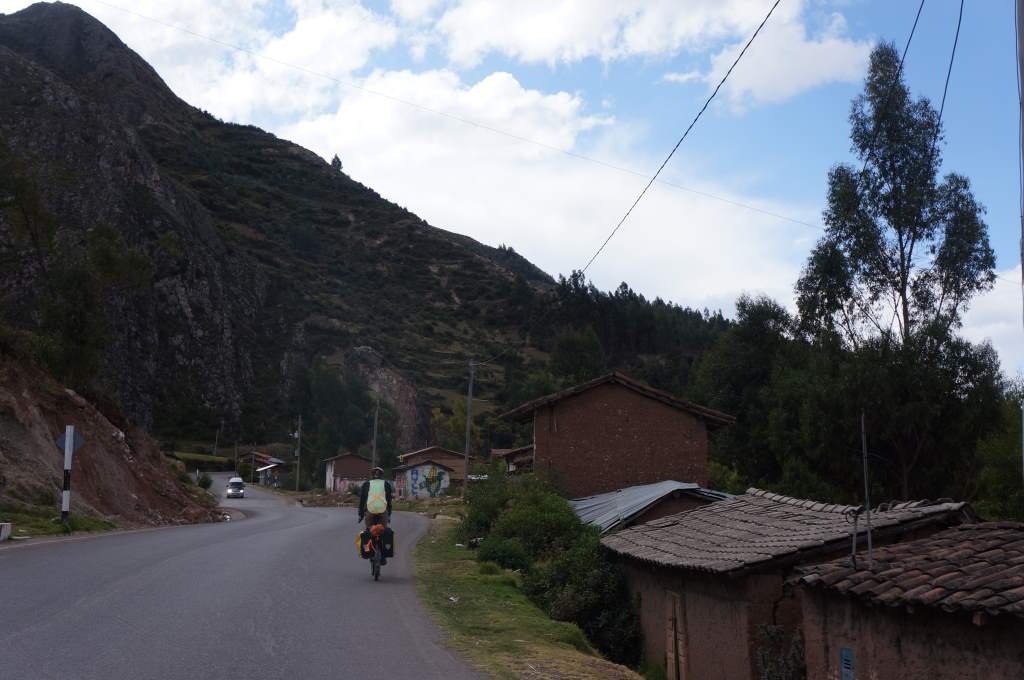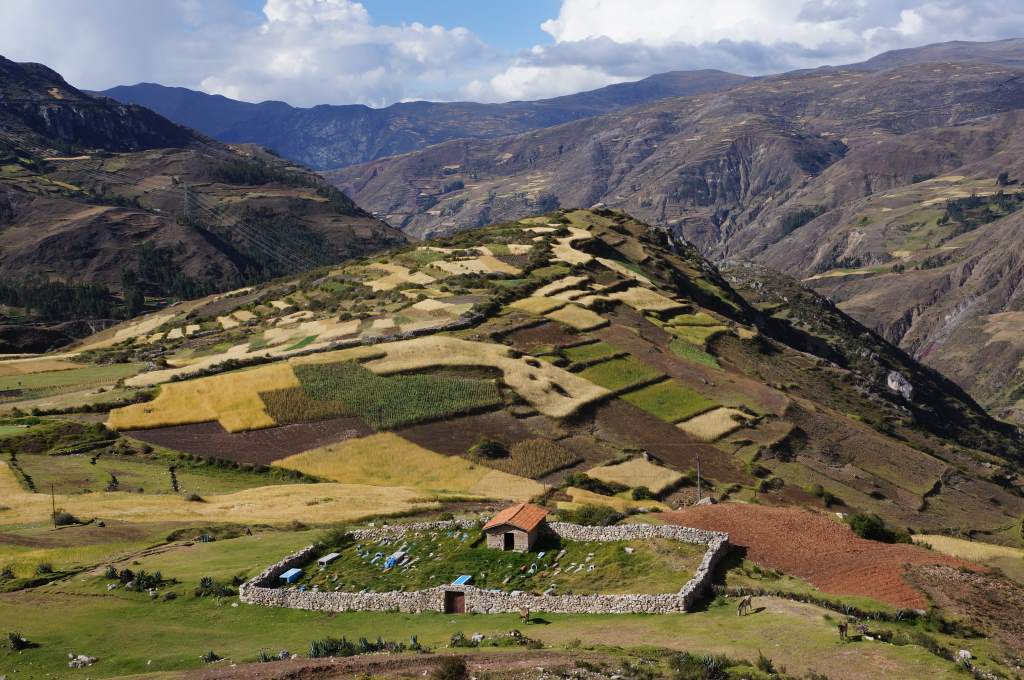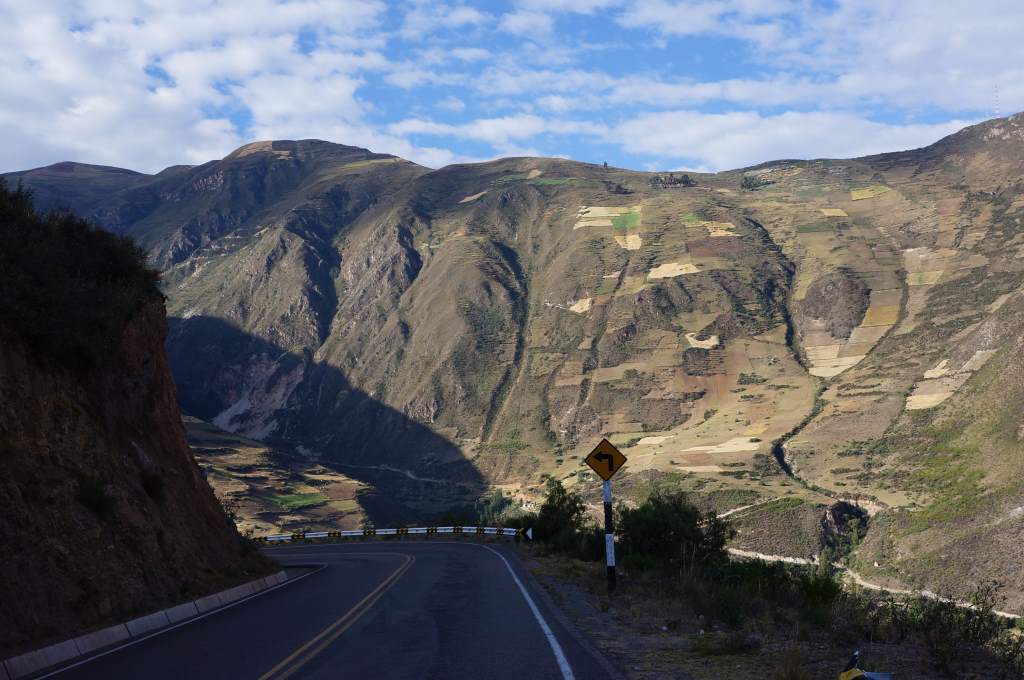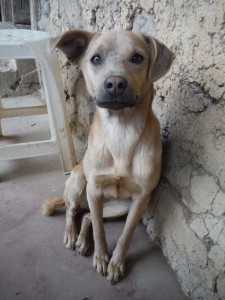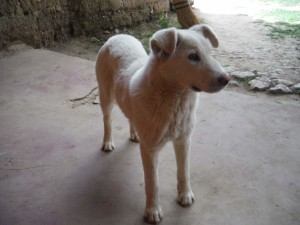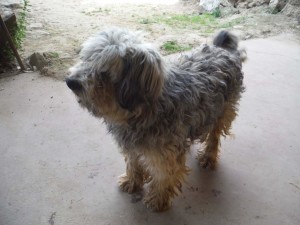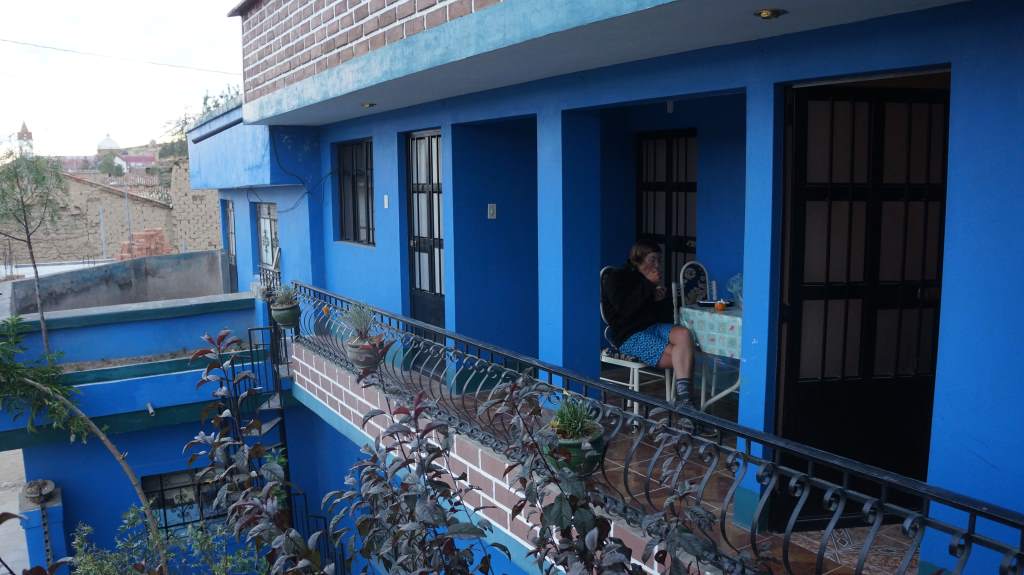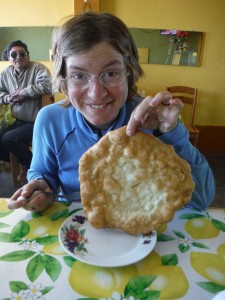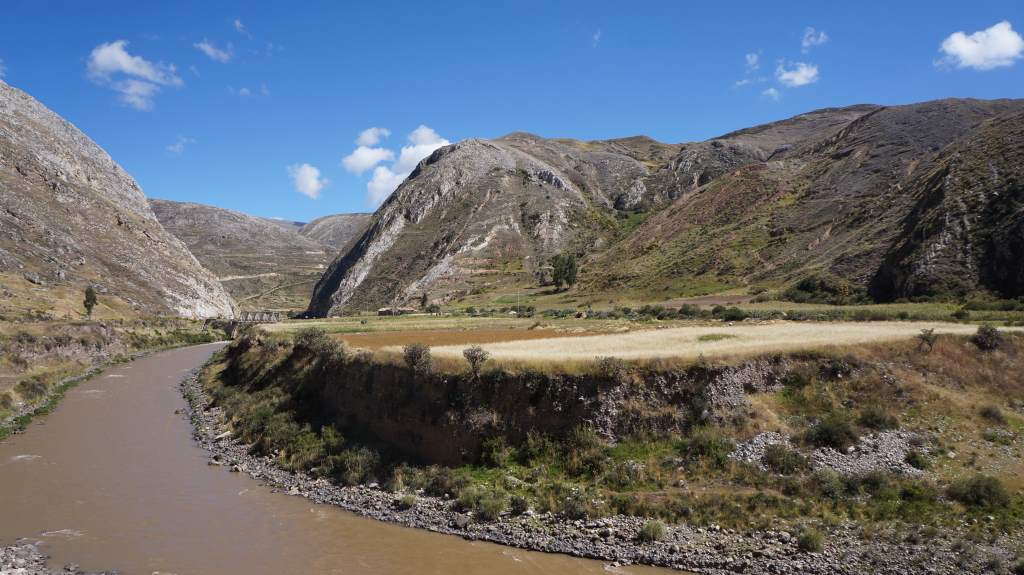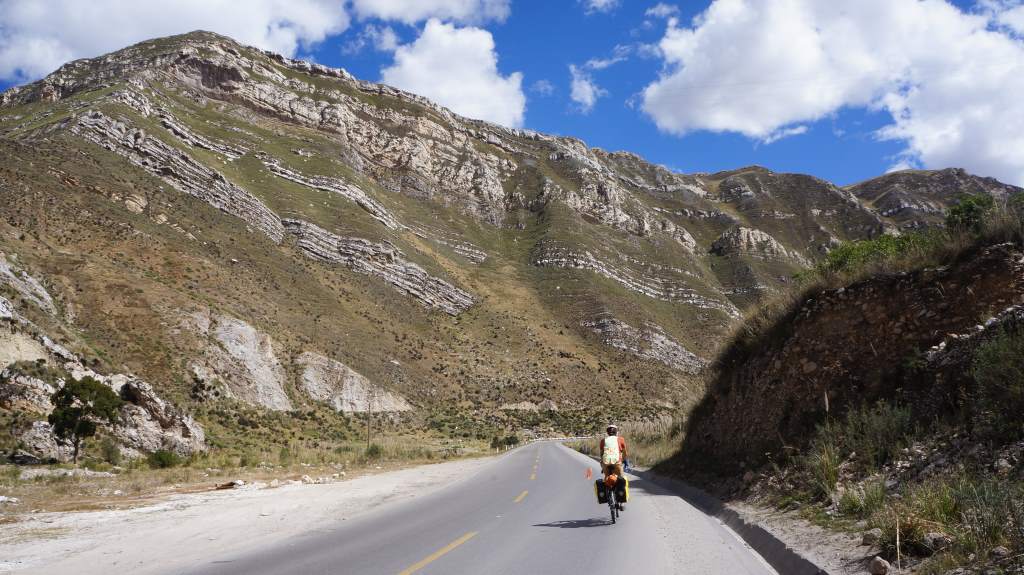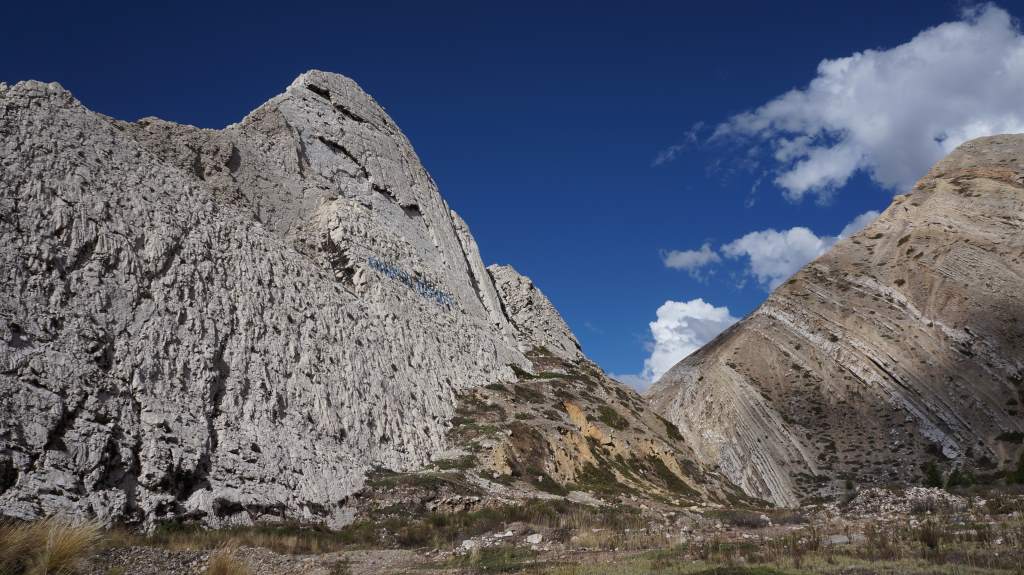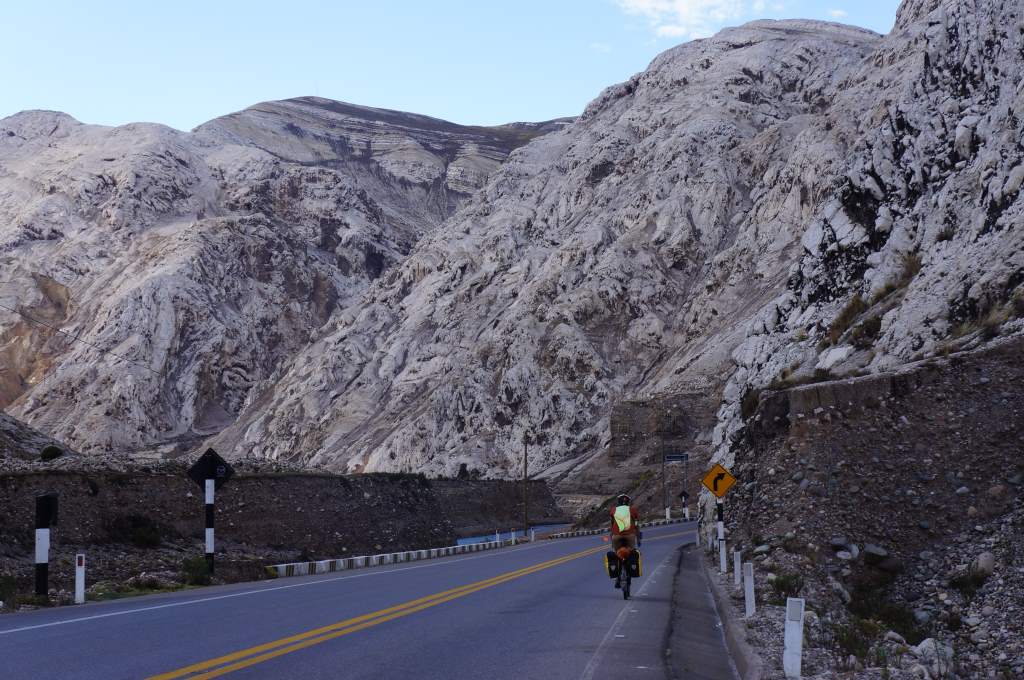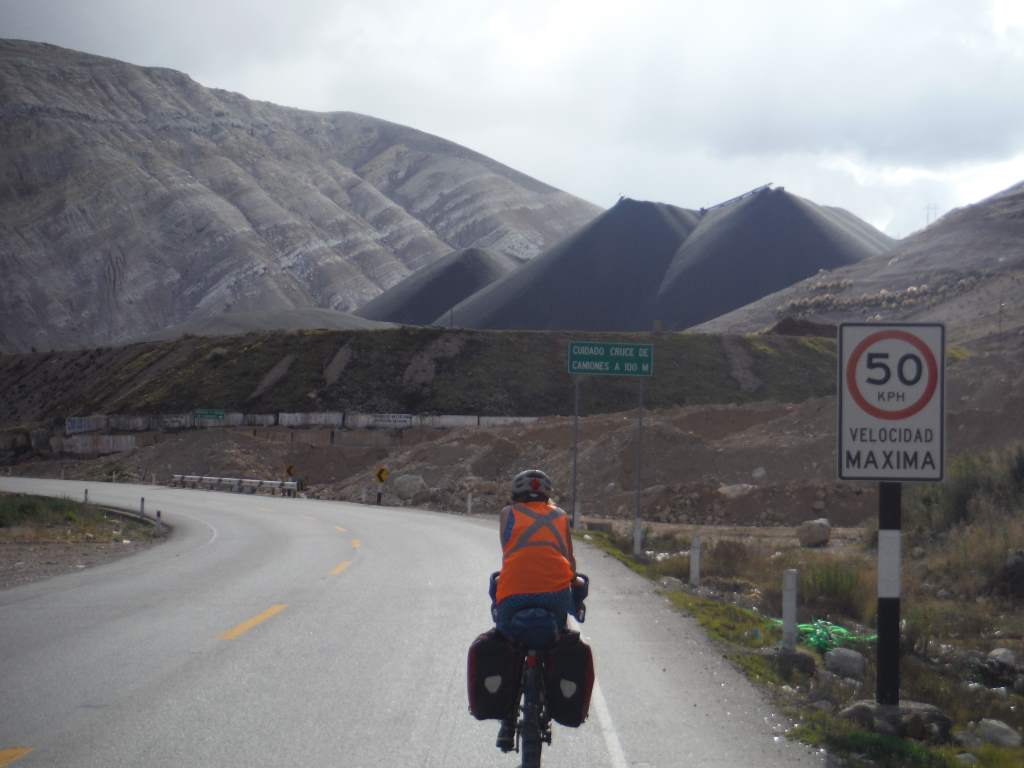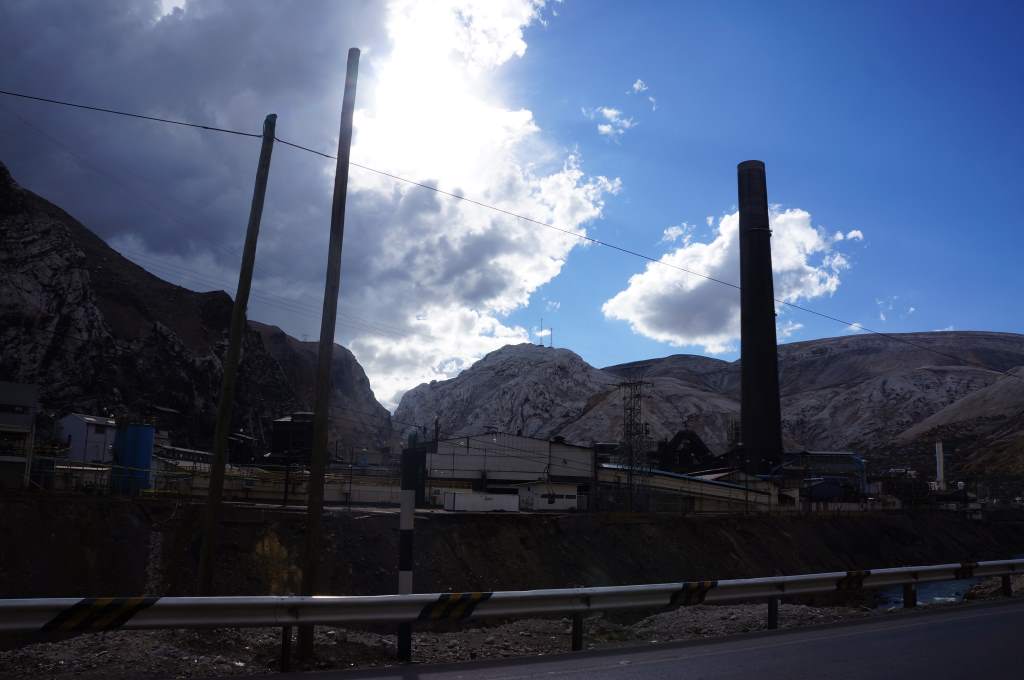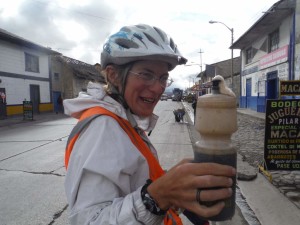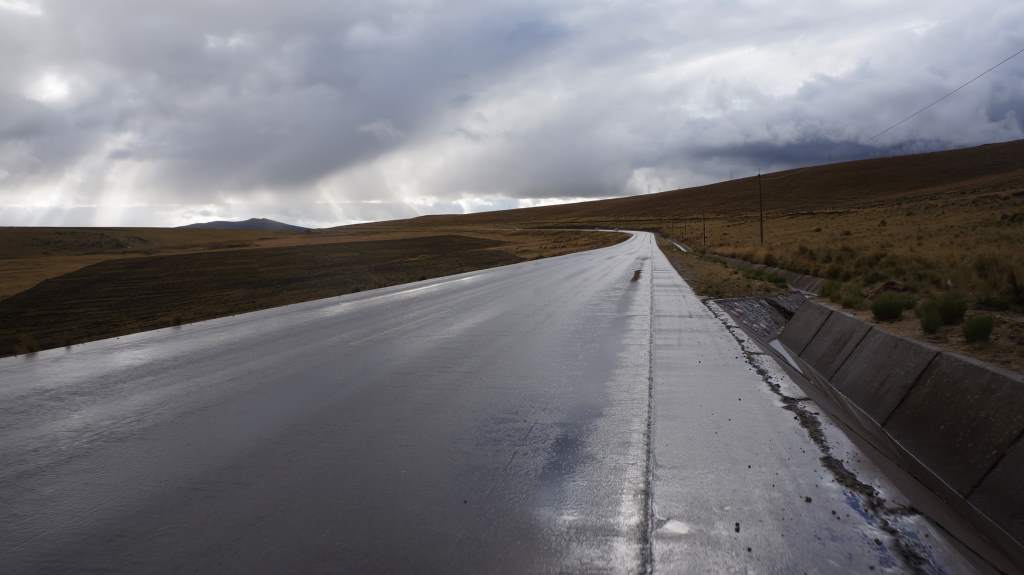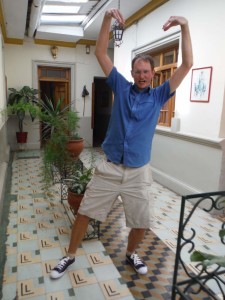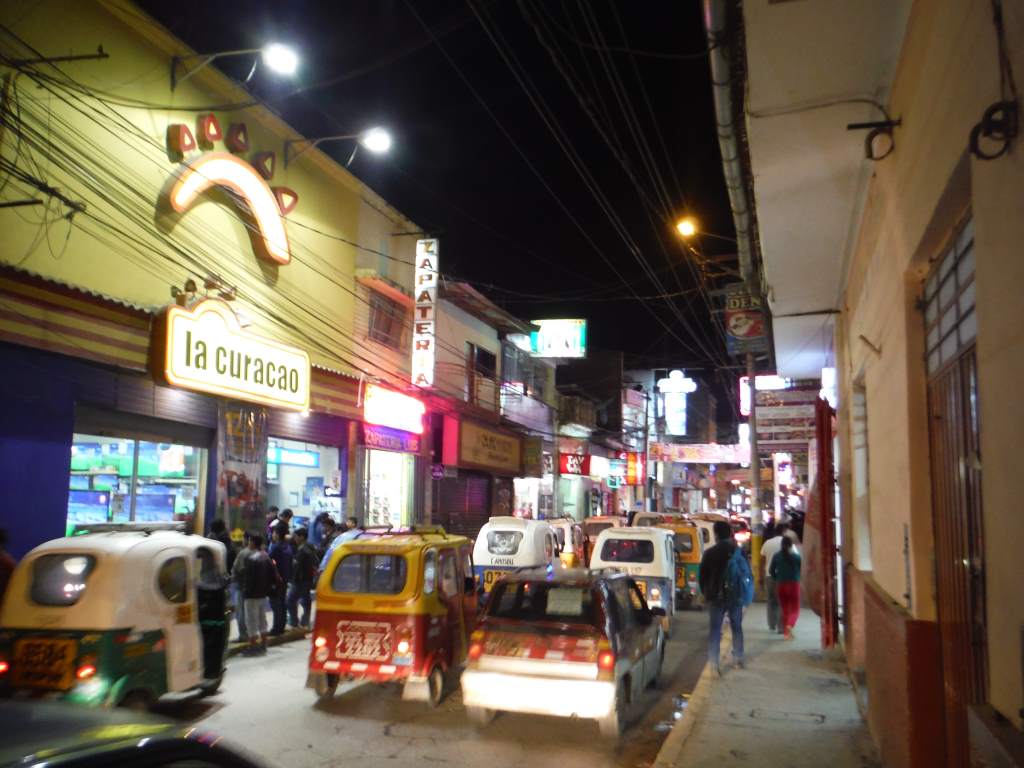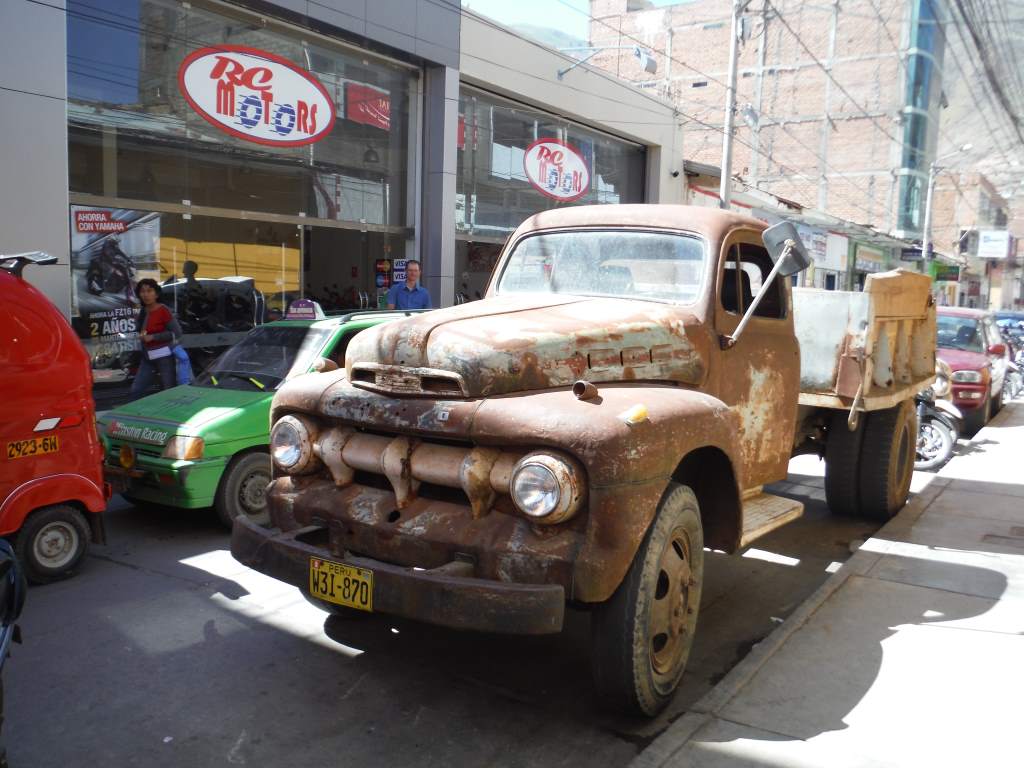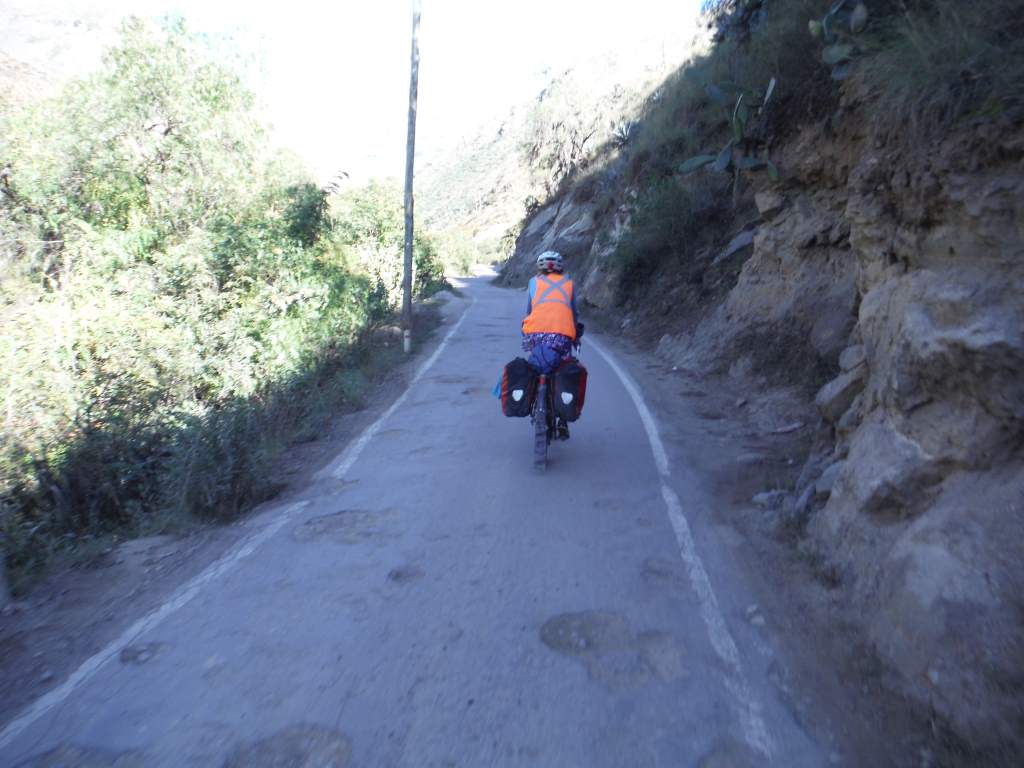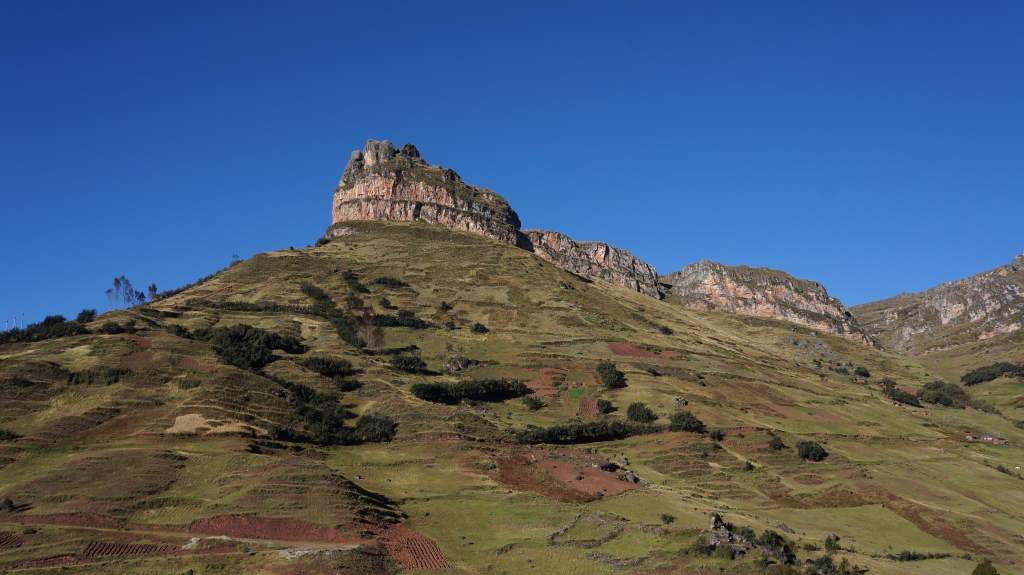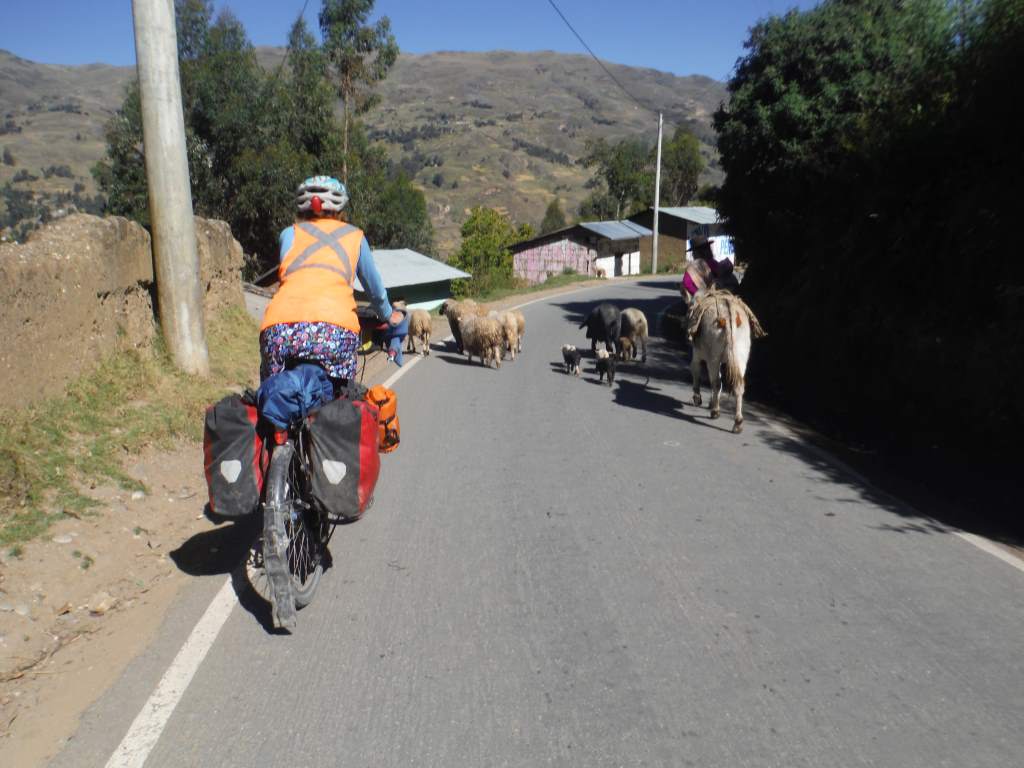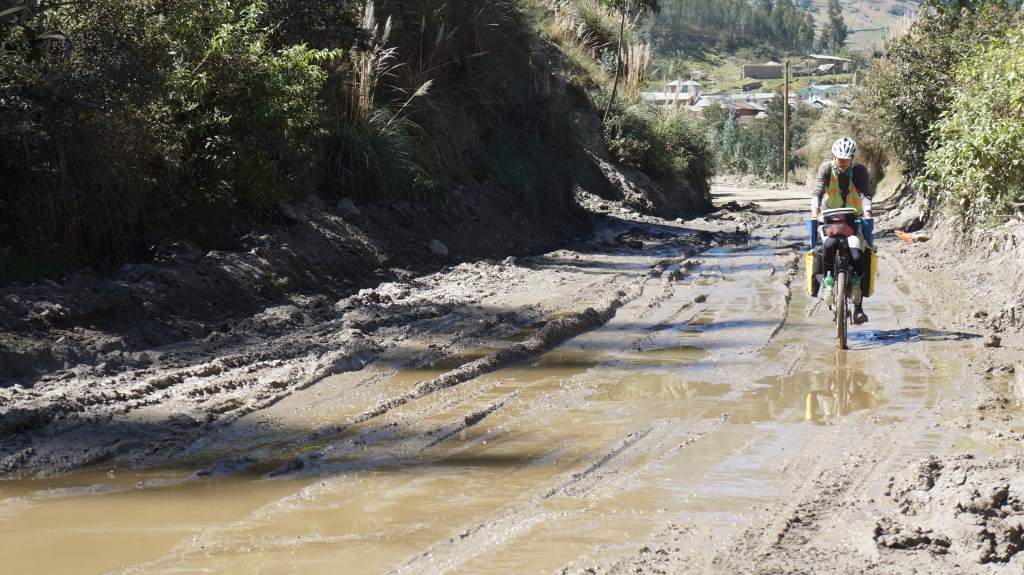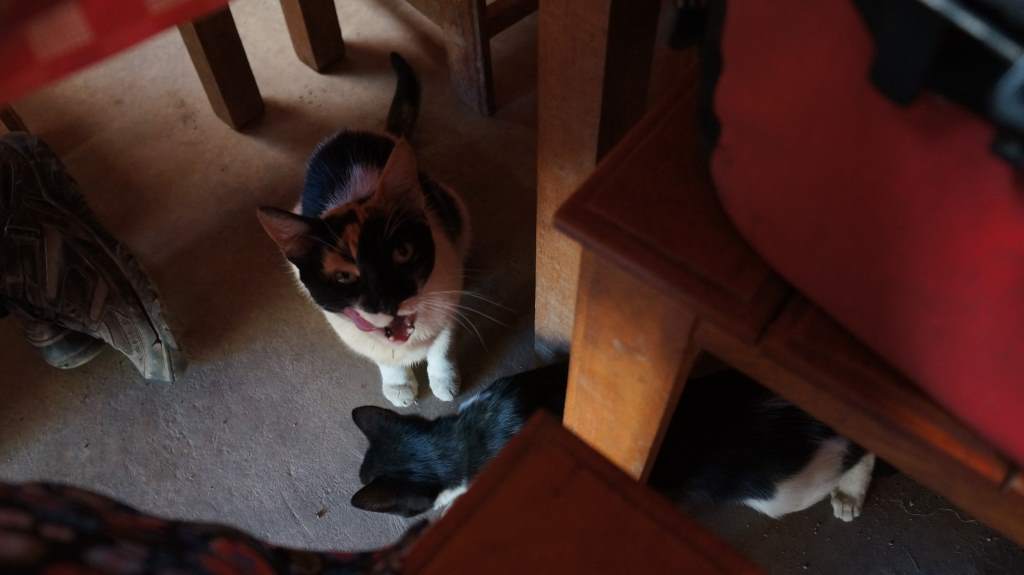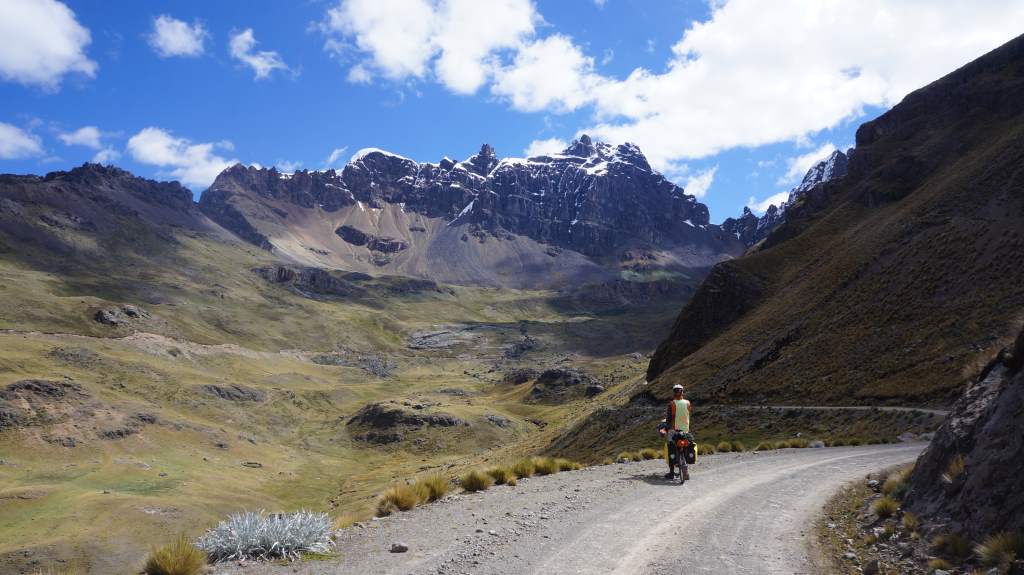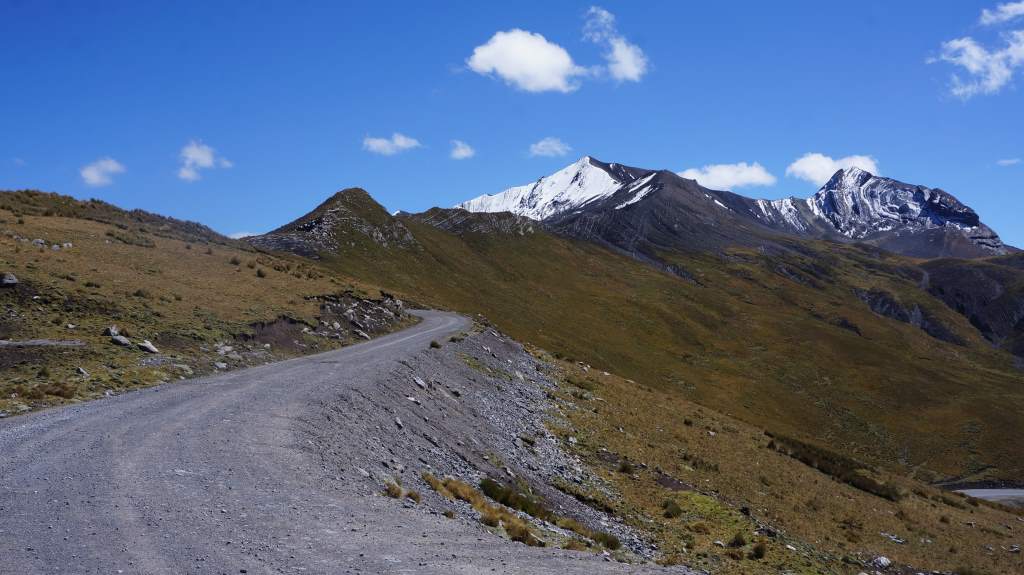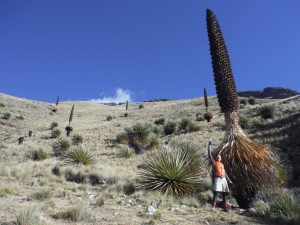This post only covers four days of adventuring, but they were so packed with fun and pictures that we decided to post about them. Last time we updated, we were taking an extra day in Popayan while our bicycles’ wheels got rebuilt with new rims. I am happy to report that the repair job was both top notch and incredibly cheap. The mechanic only charged us $2 in labor for each wheel, if you can believe it. We insisted on paying him more, which I think truly surprised him!
It was mostly downhill after Popayan, and we descended into the steaming heart of sugar cane country. The fields went on and on as far as we could see. To move the harvested sugar cane, absolutely massive trucks called ‘sugar cane trains’ drove along the straight highway. These trucks were towing up to 5 massive trailers, and some had 54 or even 58 wheels! It was very hot in the valley, over 90 degrees, but it was so flat that we made excellent time. The town we stayed in was a lively, tropical town full of juice stalls and motorcycles.
Our second day out was almost completely flat. As you can guess, it was also hot, and pretty dang boring. Oh, and I got two flat tires before 10 am. Enough said.
We finally left the valley on our third day and headed into the hills straight away. It was lovely, with all sorts of tropical plants and fruit stands. We navigated a couple of hectic, dense cities and finally emerged into the coffee zone. That’s right – the coffee zone! They actually call it the ‘coffee axis’, but I think that sounds a bit strange in English.
We arrived in the tourist town of Salento at 2:30, and quickly found a room and jumped on a coffee tour at a nearby farm. It was a fantastic tour! We got to learn about coffee plants, berries, harvest, and preparation. This coffee production thing is a lot more complicated than I ever thought.
The coffee plants are sprouted in sand for four months, then they are transplanted to little bags of compost. After about a year they are about 16 inches tall, when they are planted in the field. After five years they start to produce berries, and will continue to do so for about 60 years. That is a long time! Coffee berries then have to be de-pulped, soaked for 24 hours, rinsed, dried, peeled, and finally roasted. We got to go through the whole process with our guide, including grinding, roasting, and drinking.
Even though the coffee part was great, Jason and I both agreed that our favorite part of the tour was seeing the other plants on the farm: pineapple, bamboo, banana, and other crazy fruits that don’t have names in English.
The next day we got up early to take a tourist jeep to a nearby valley for a hike. We got there so early, in fact, that no one else was there and we had to wait for the first jeep. Our hike up the well-known Valley of Cocora was absolutely lovely. We walked through fields, then cloud forest, and across many bridges. There was a hummingbird house at the end of the trail where we sipped hot chocolates and dozens of them buzz around the feeders.
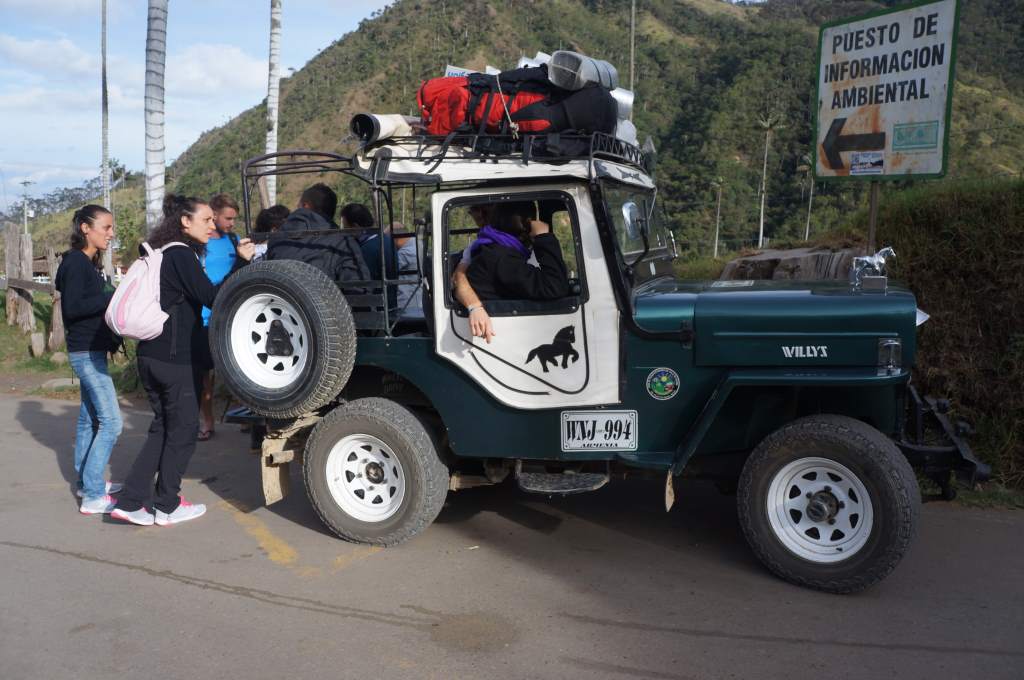
Our Jeep was full with 7 passengers in the main section, plus another 5 that had the pleasure of standing on the rear bumper and holding on!
On our way back down (via a different route) we got to walk through a grove of wax palms. These are super tall palm trees that only grow in very specific, high-altitude conditions.
We made it back to our room in Salento around 2 pm, and immediately fell asleep. Going straight from cycle-tourist to regular tourist is exhausting!
